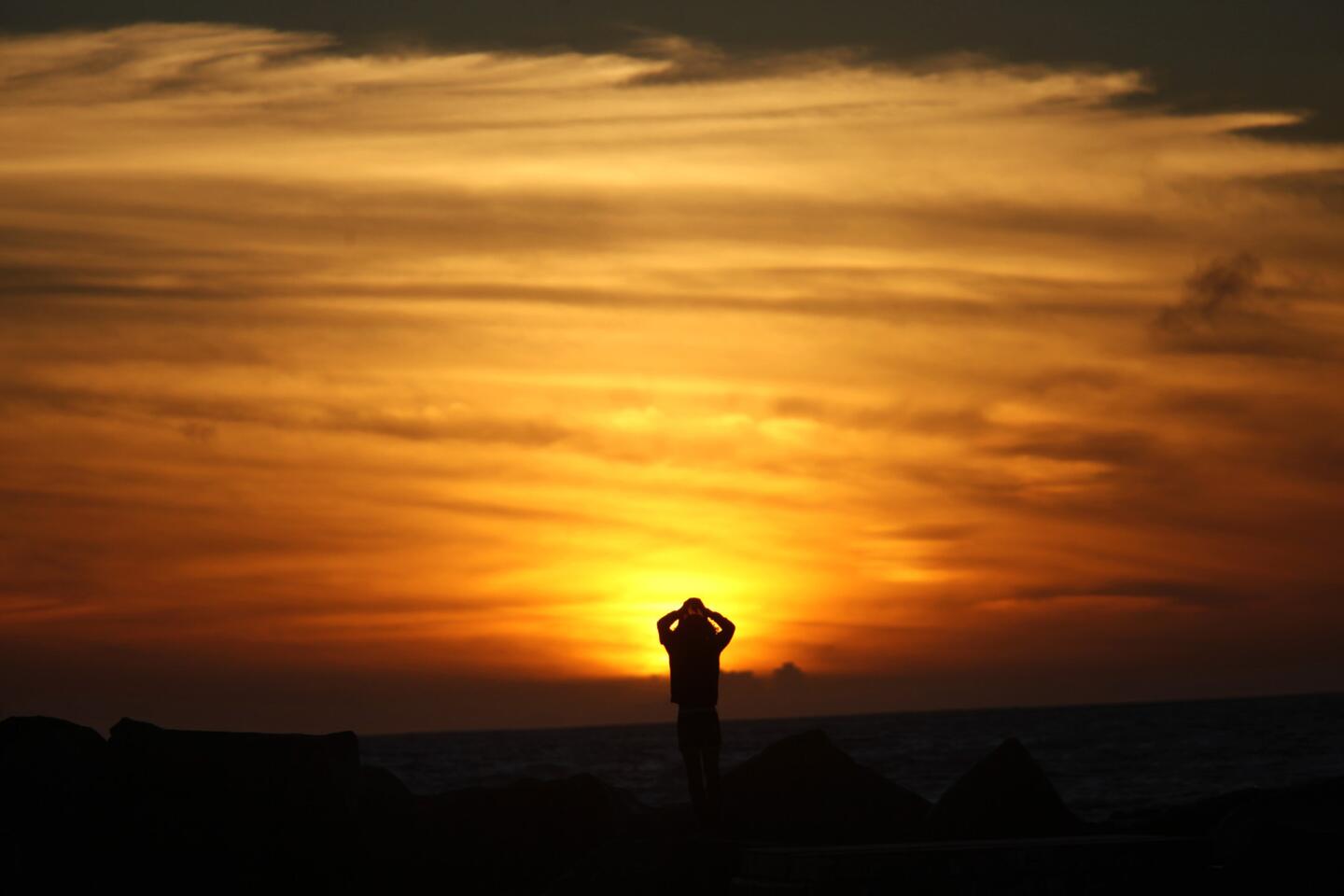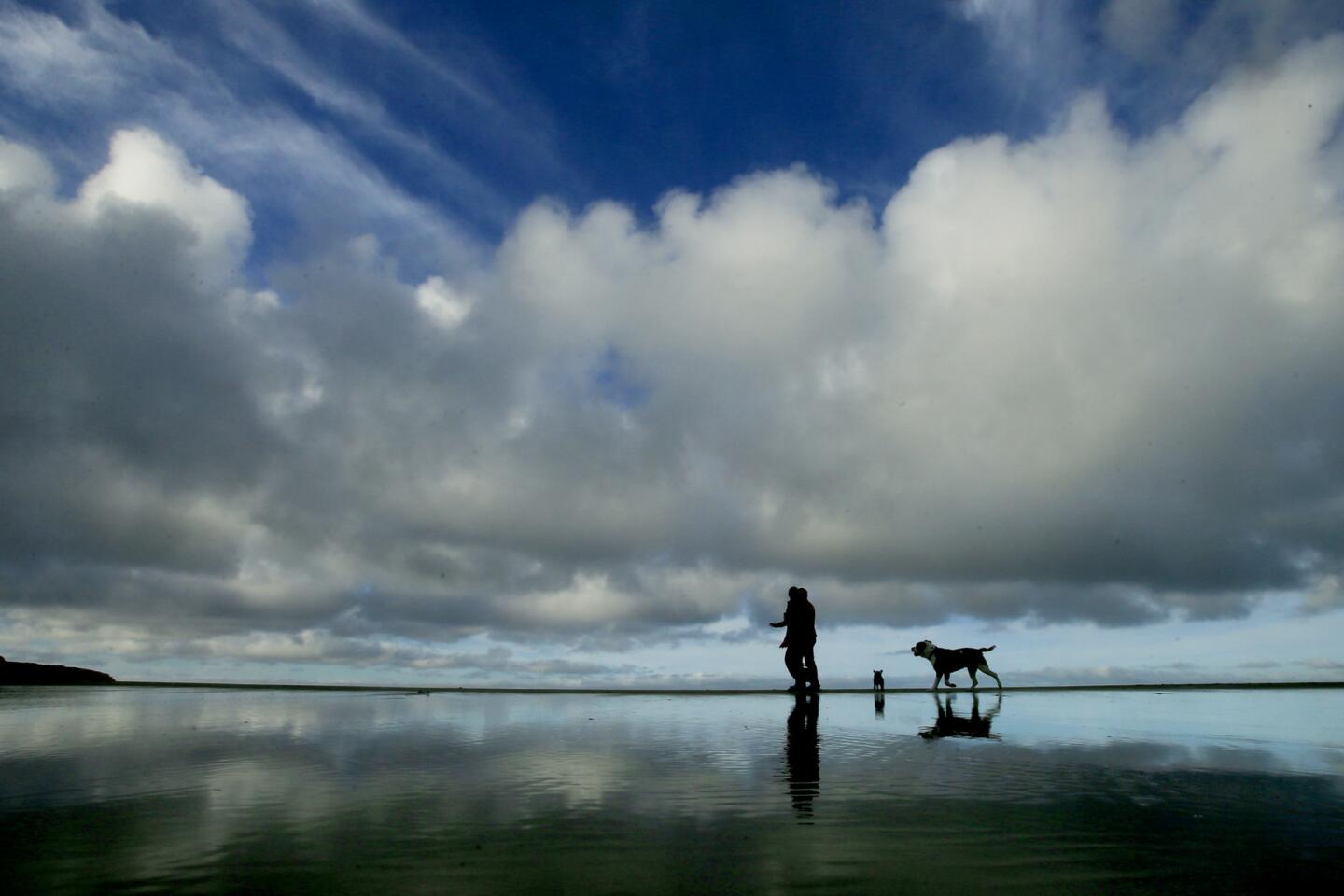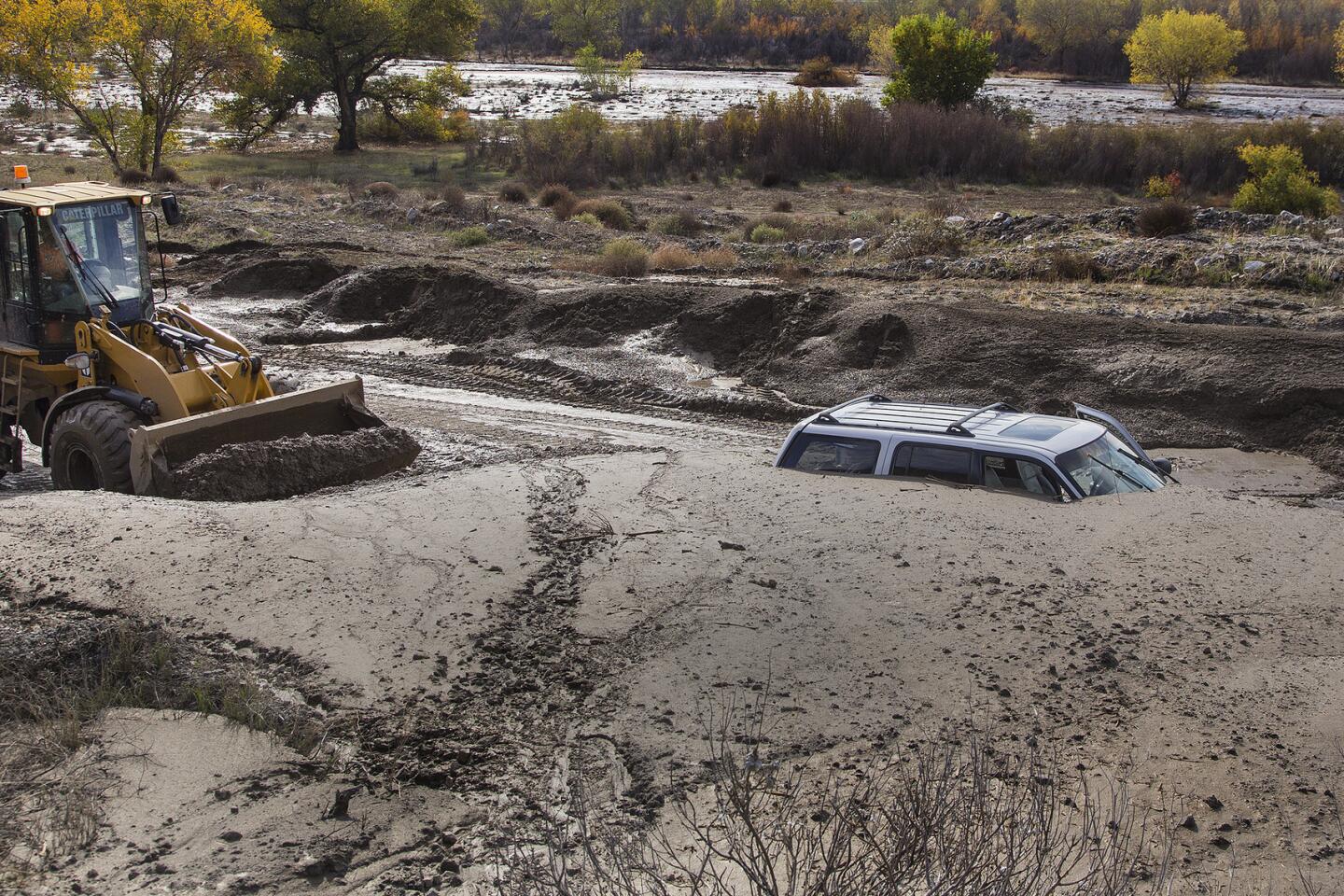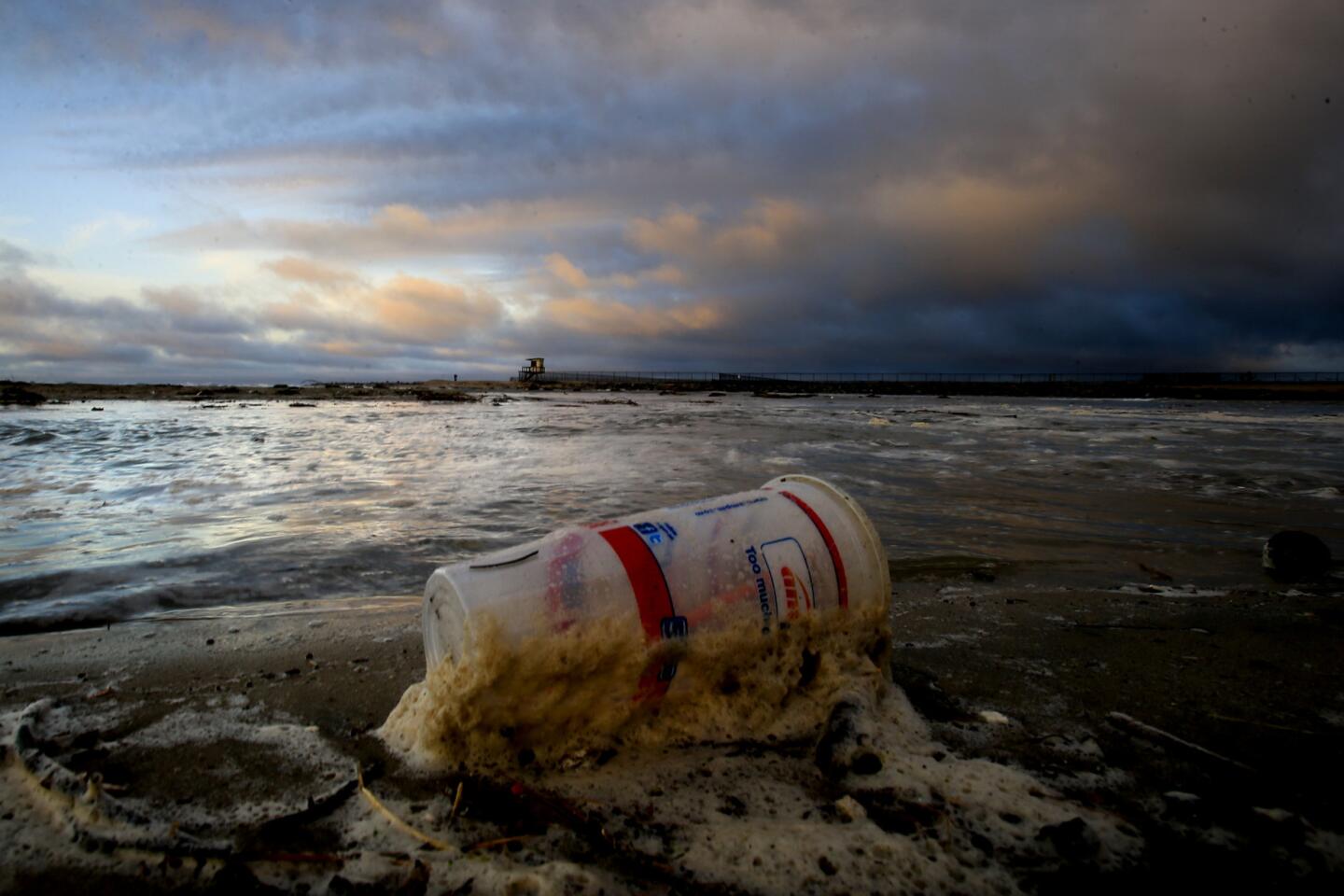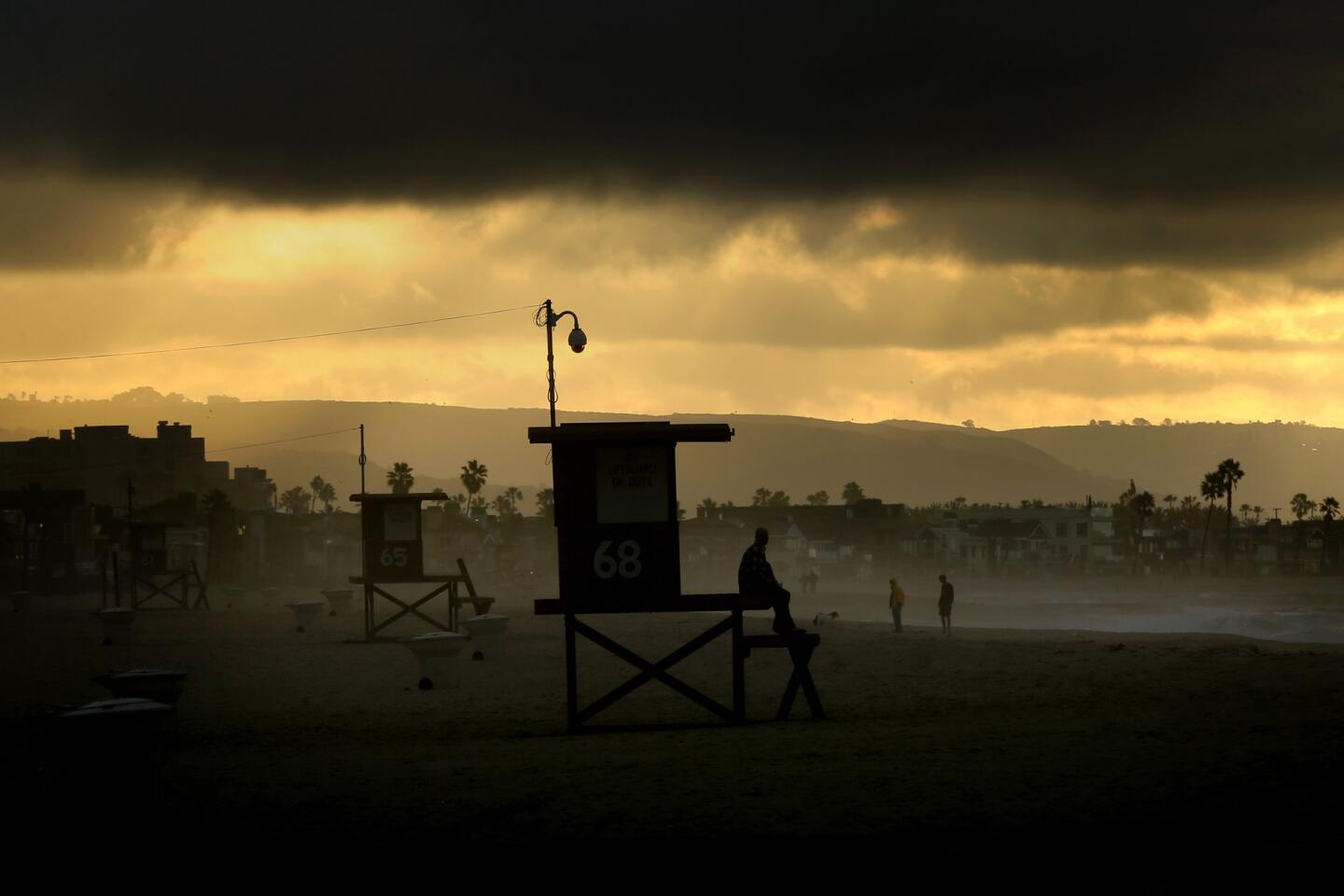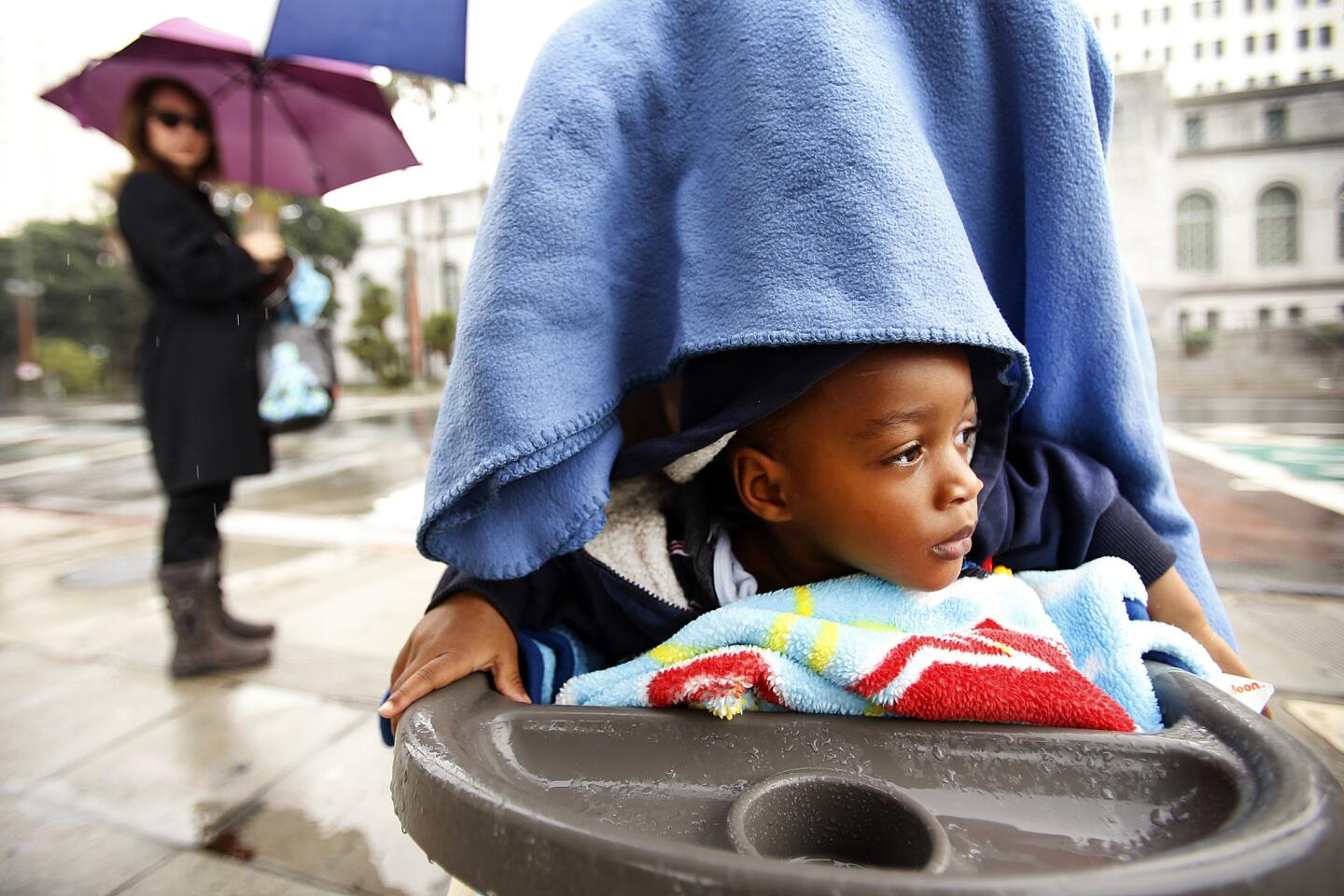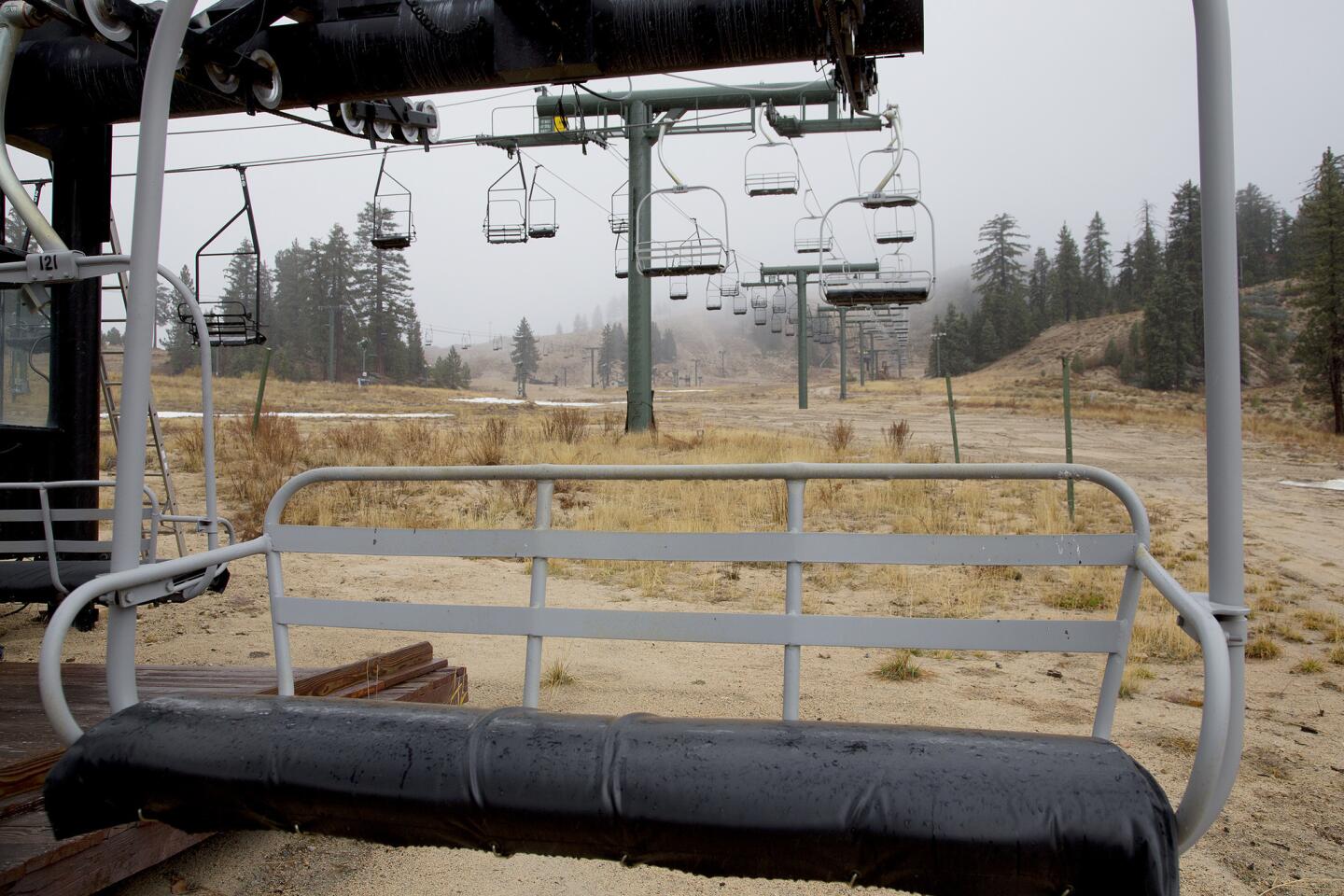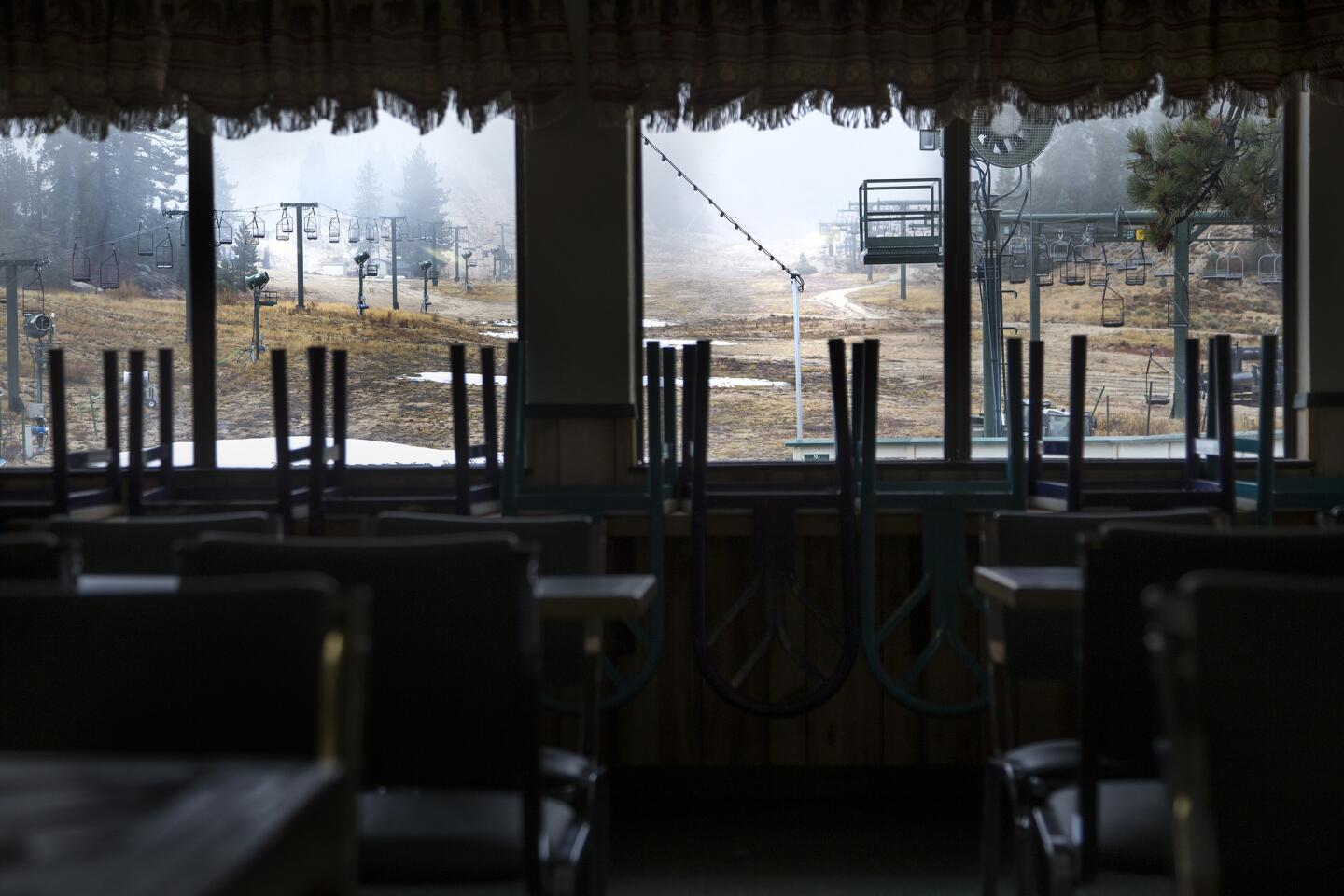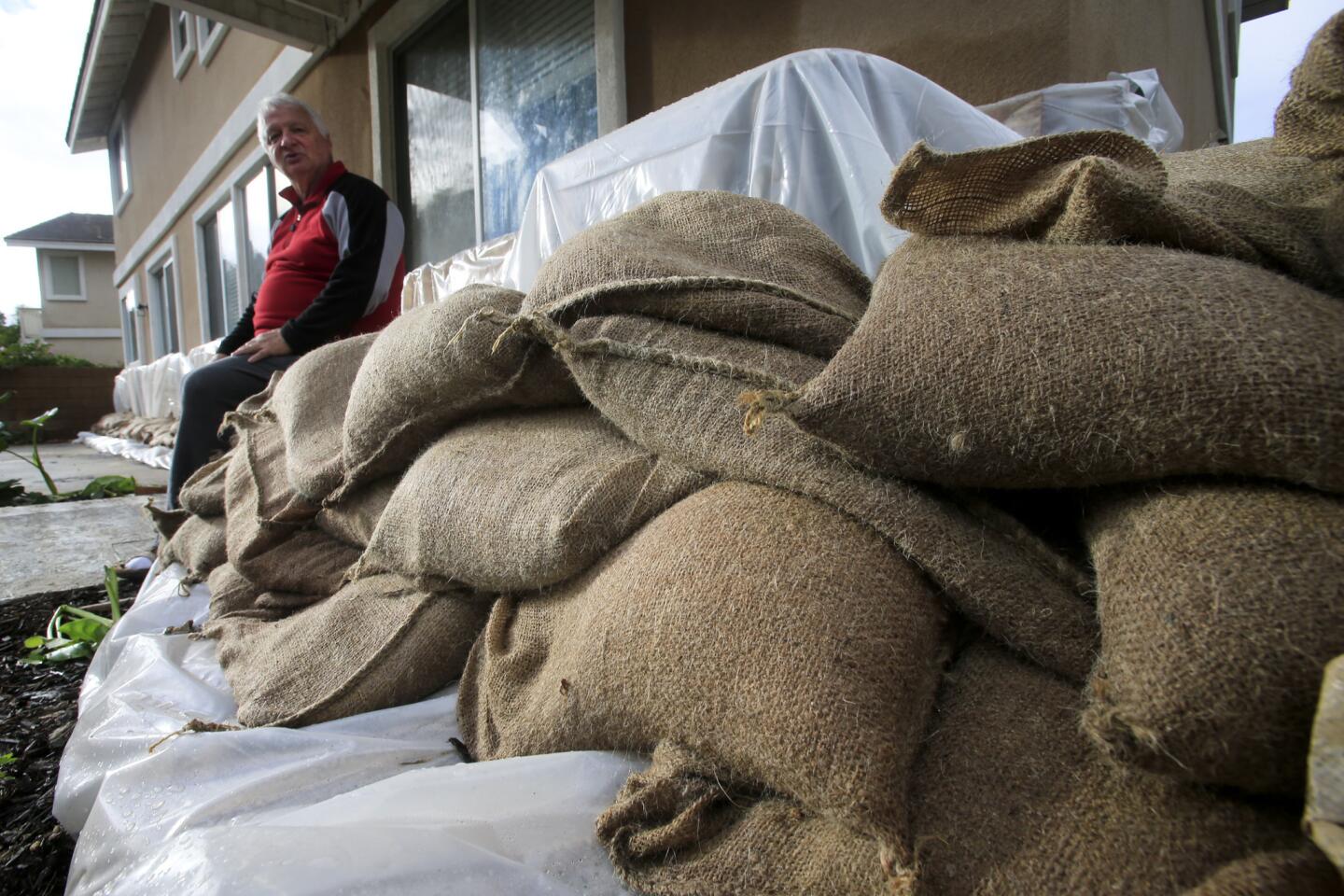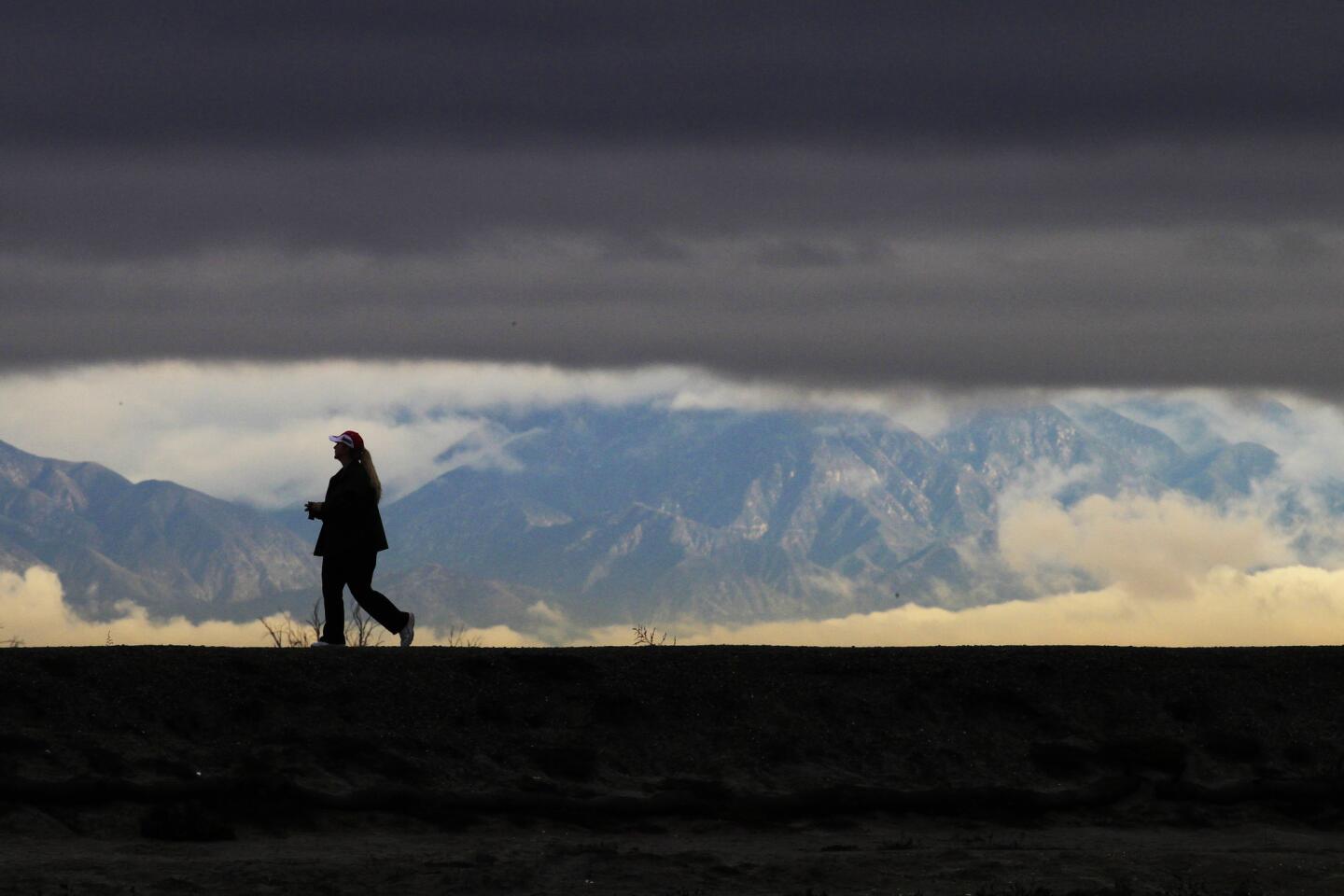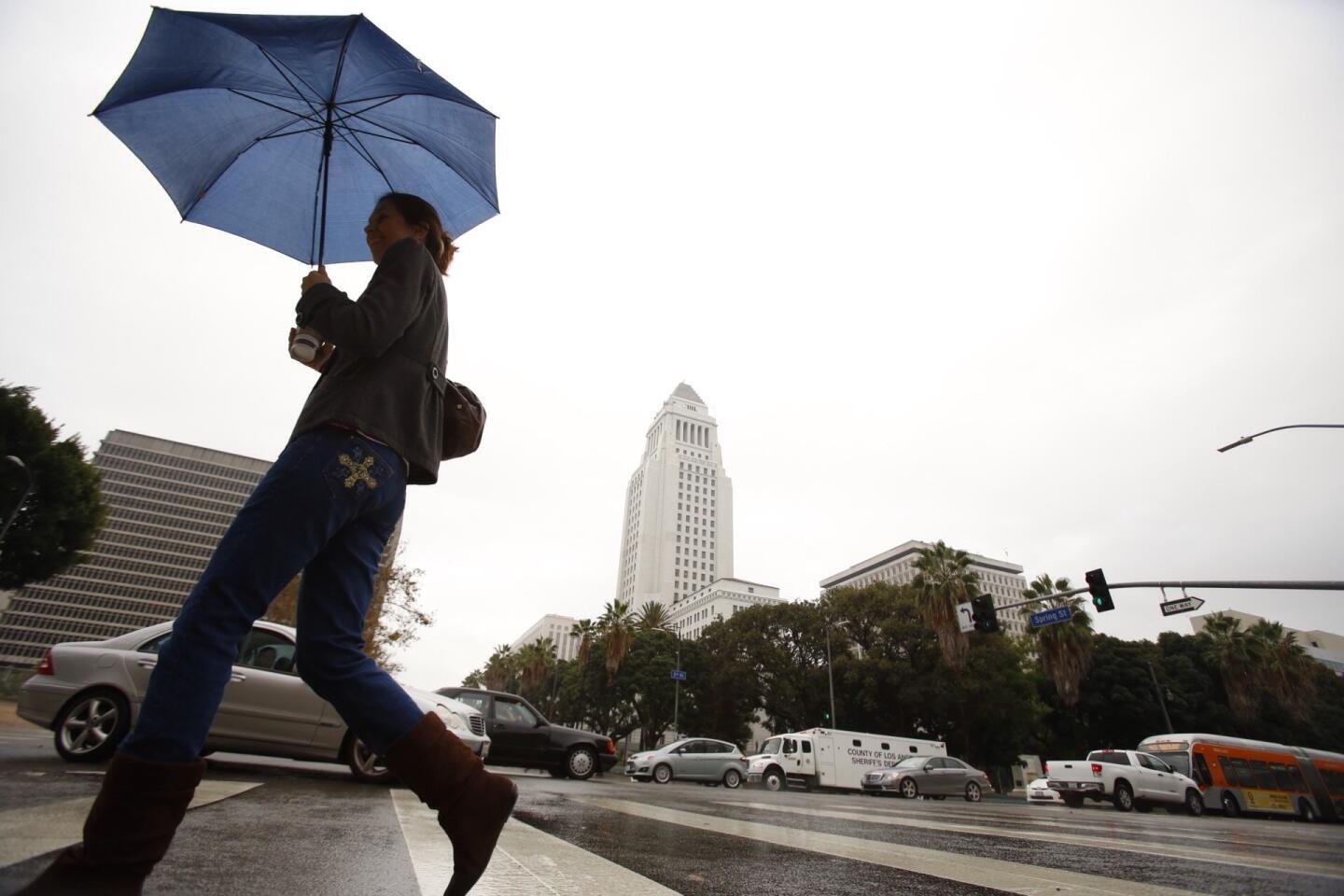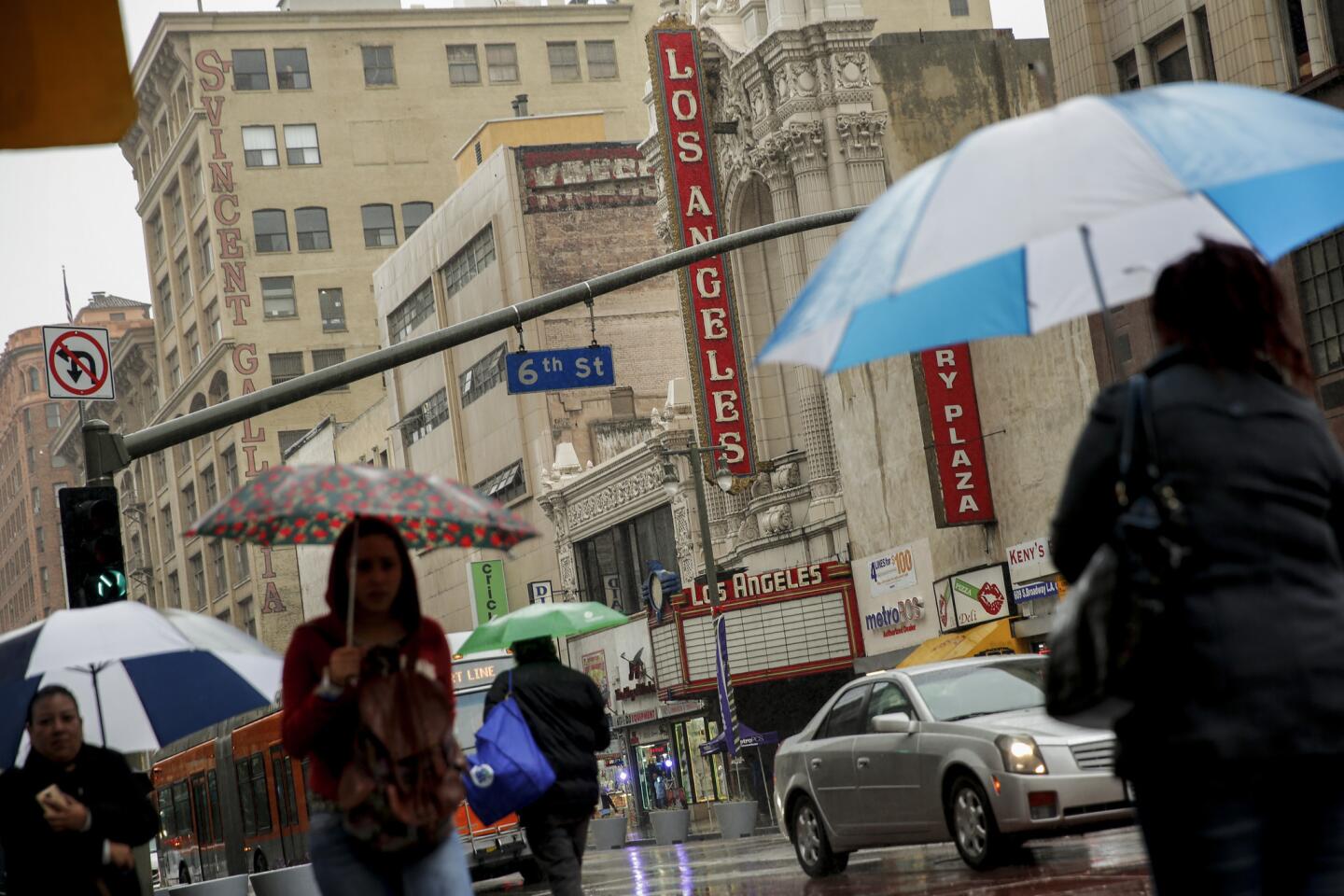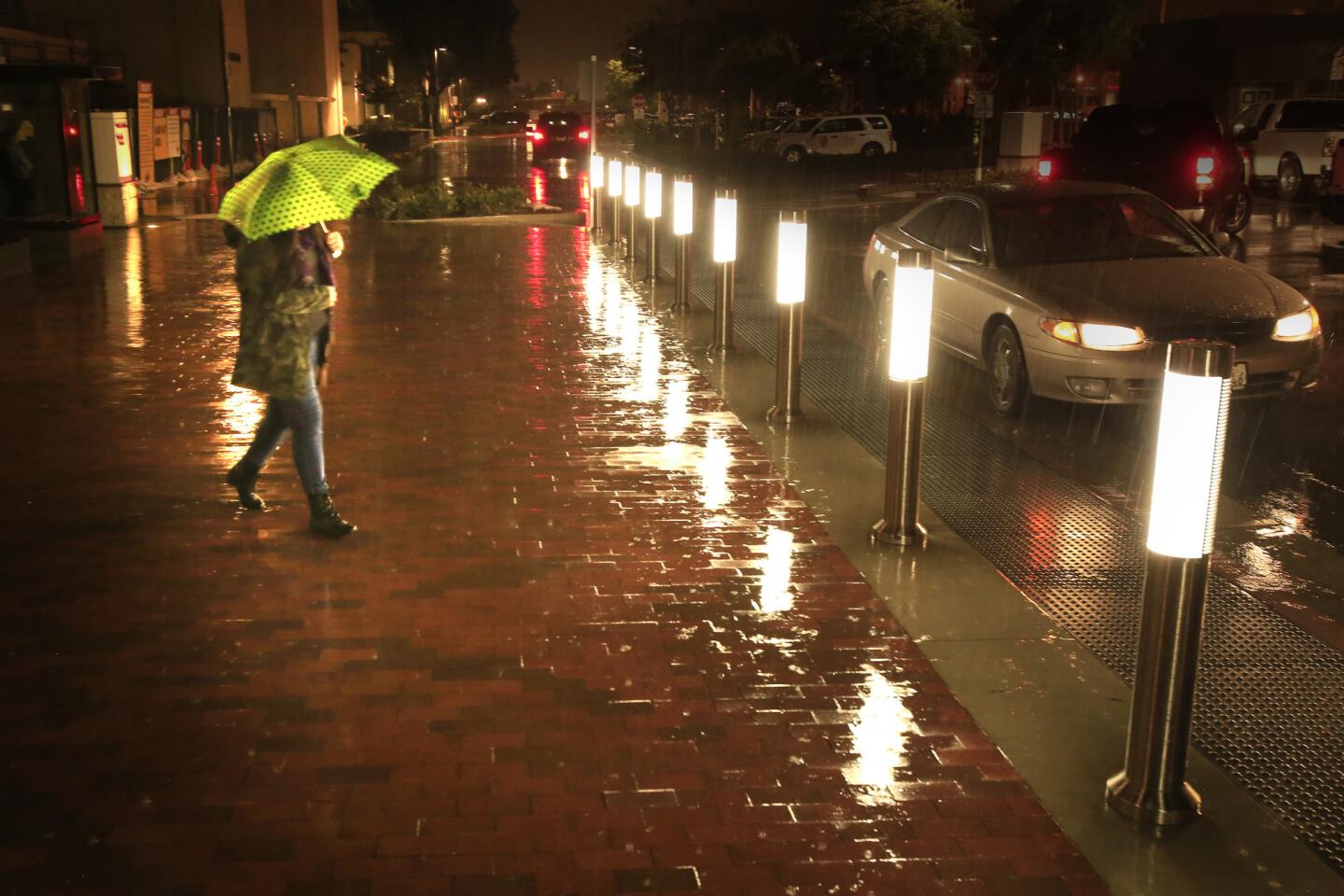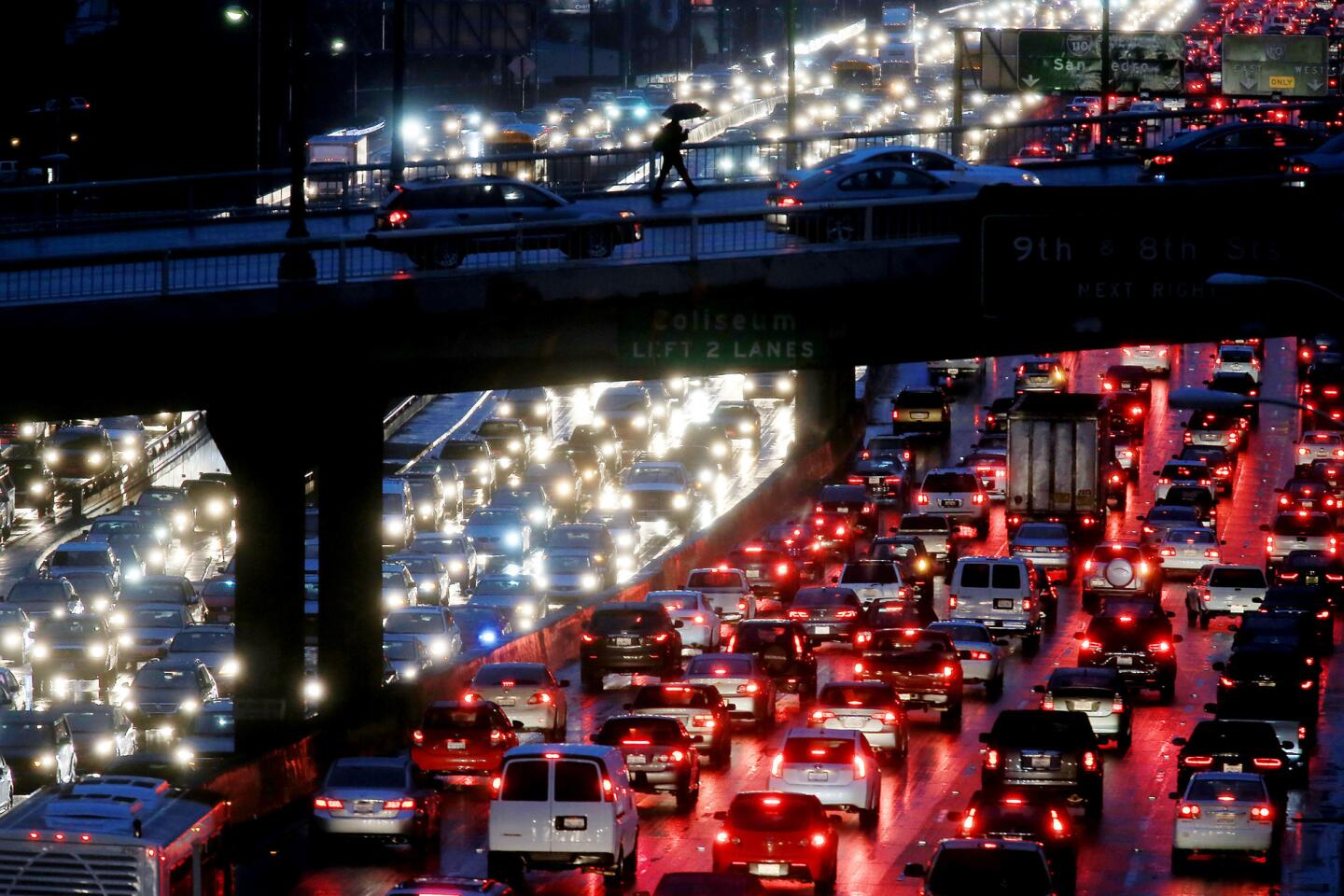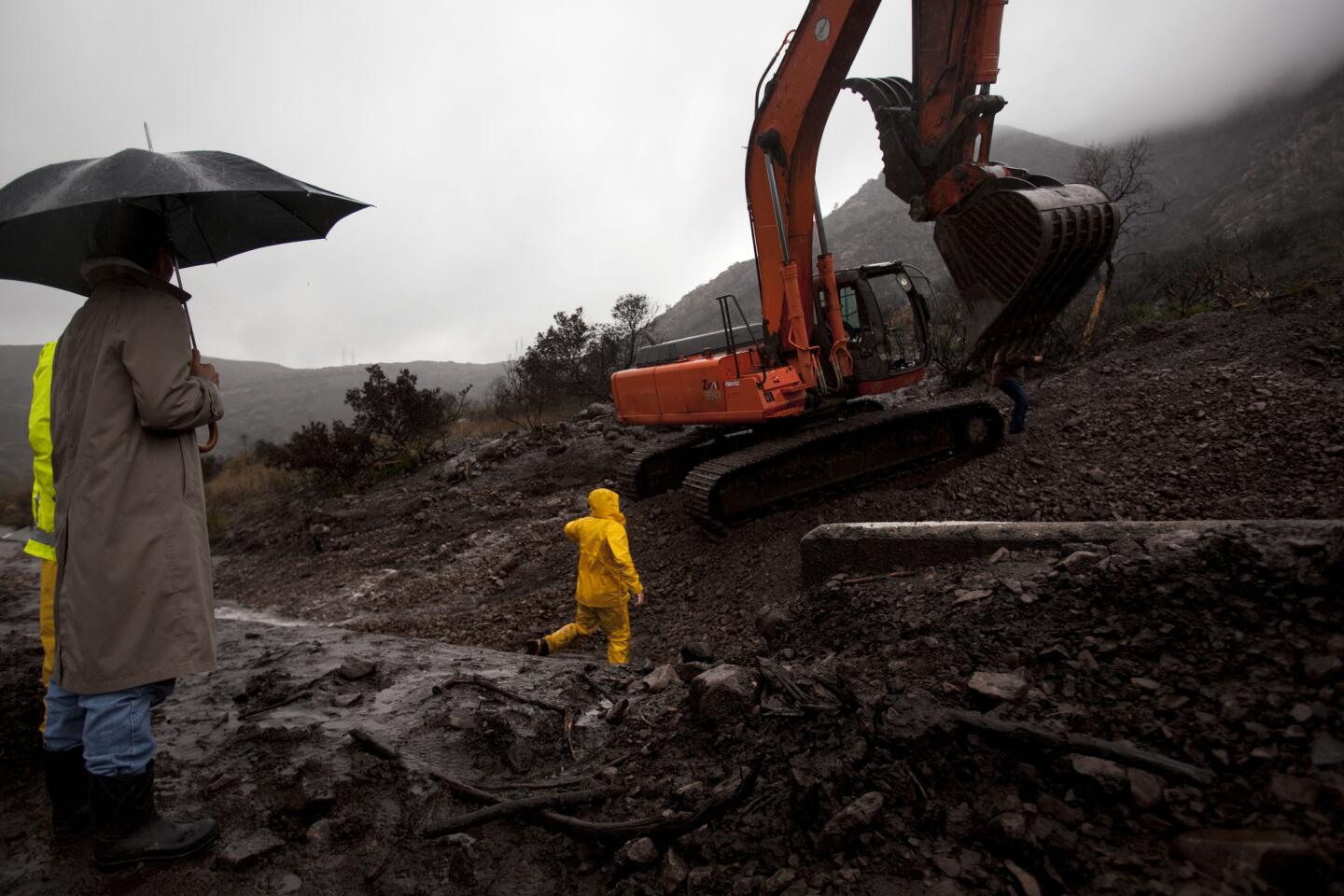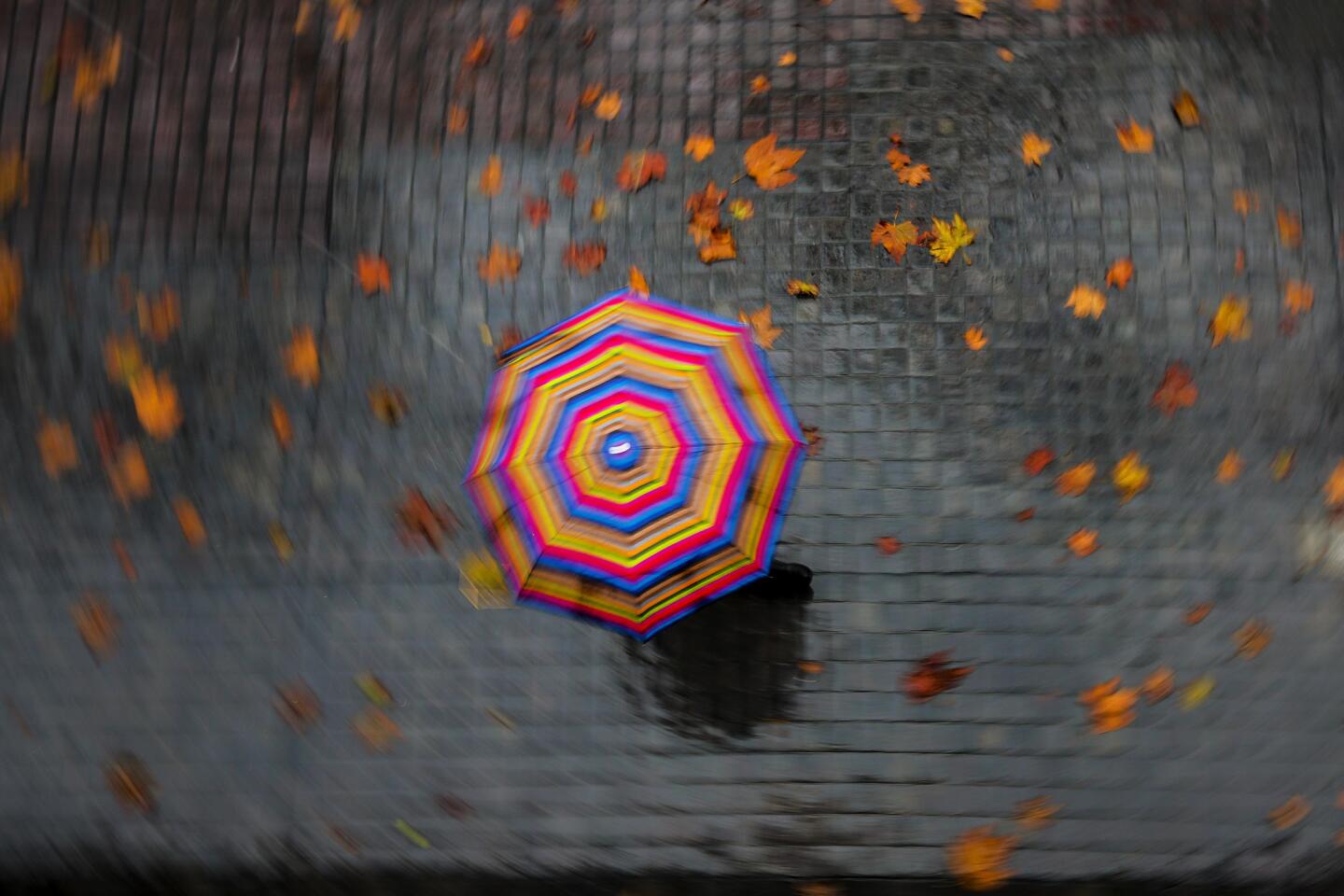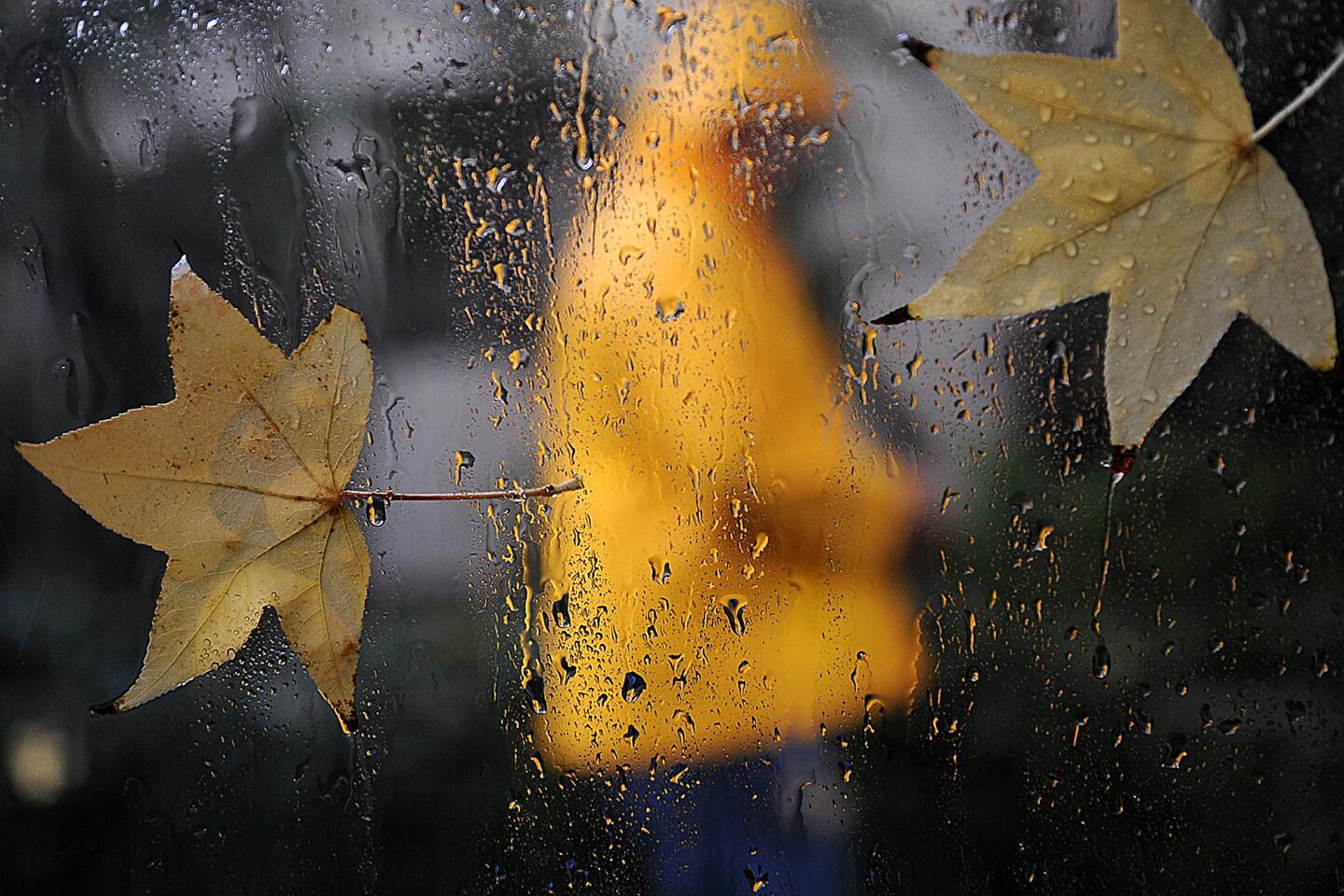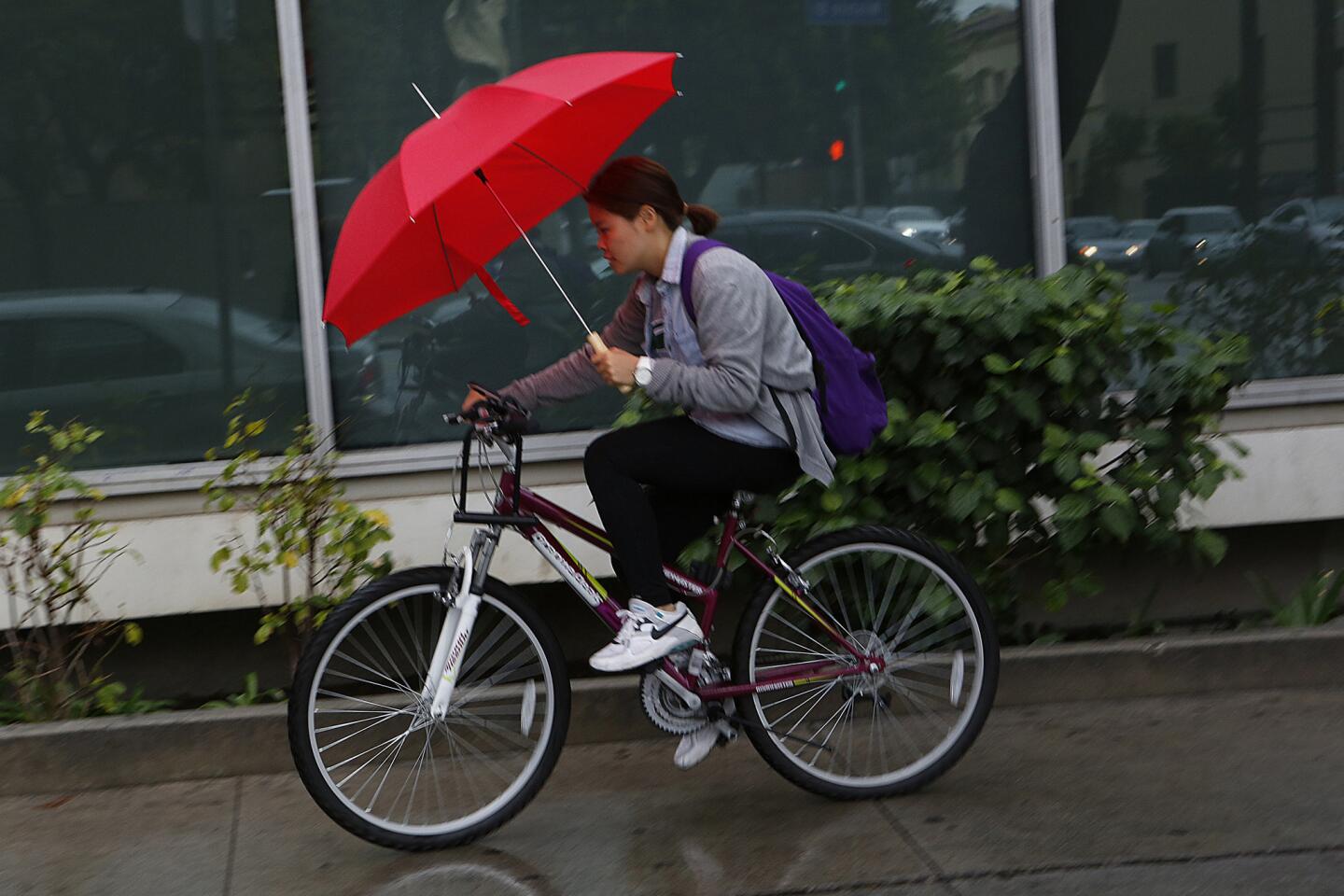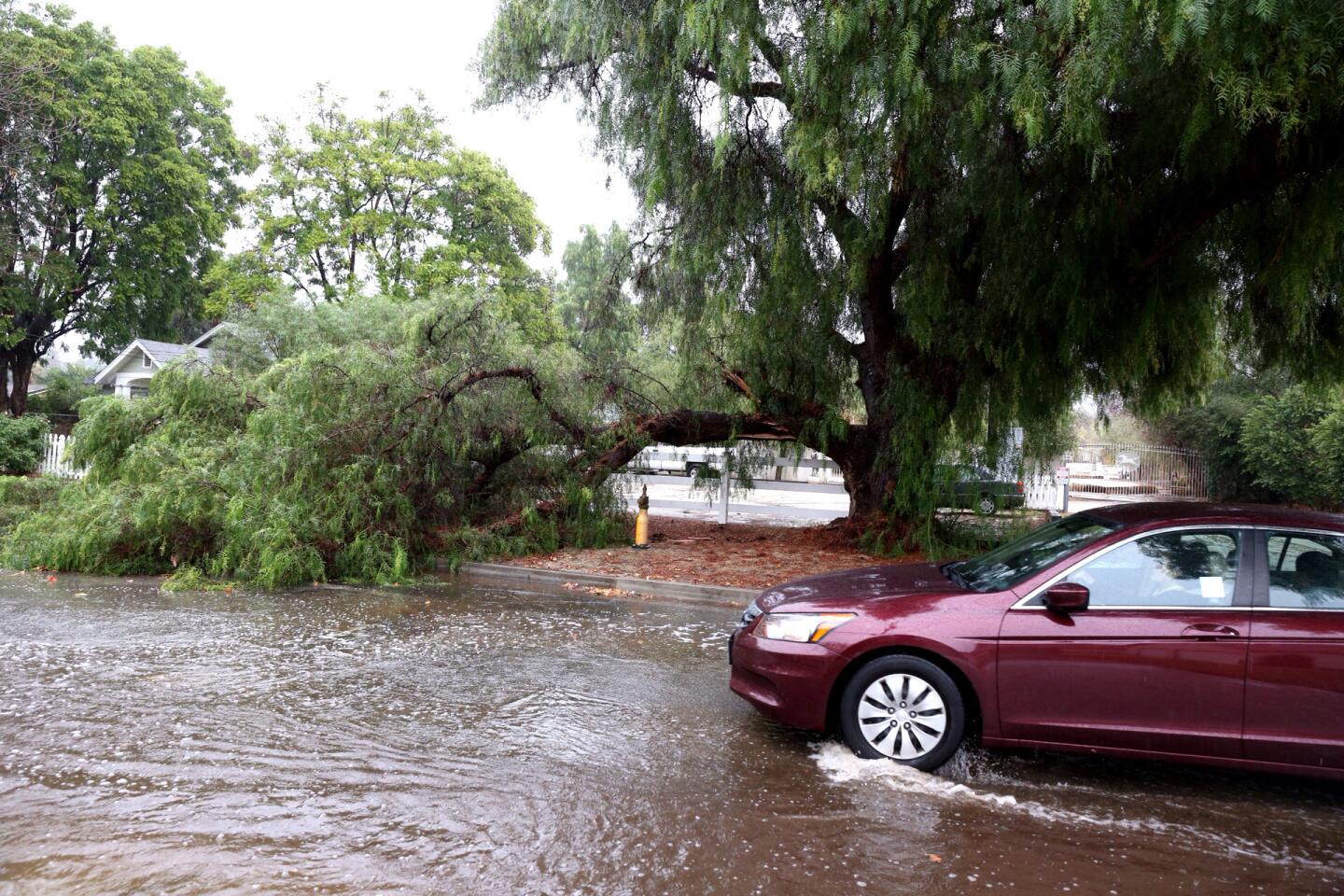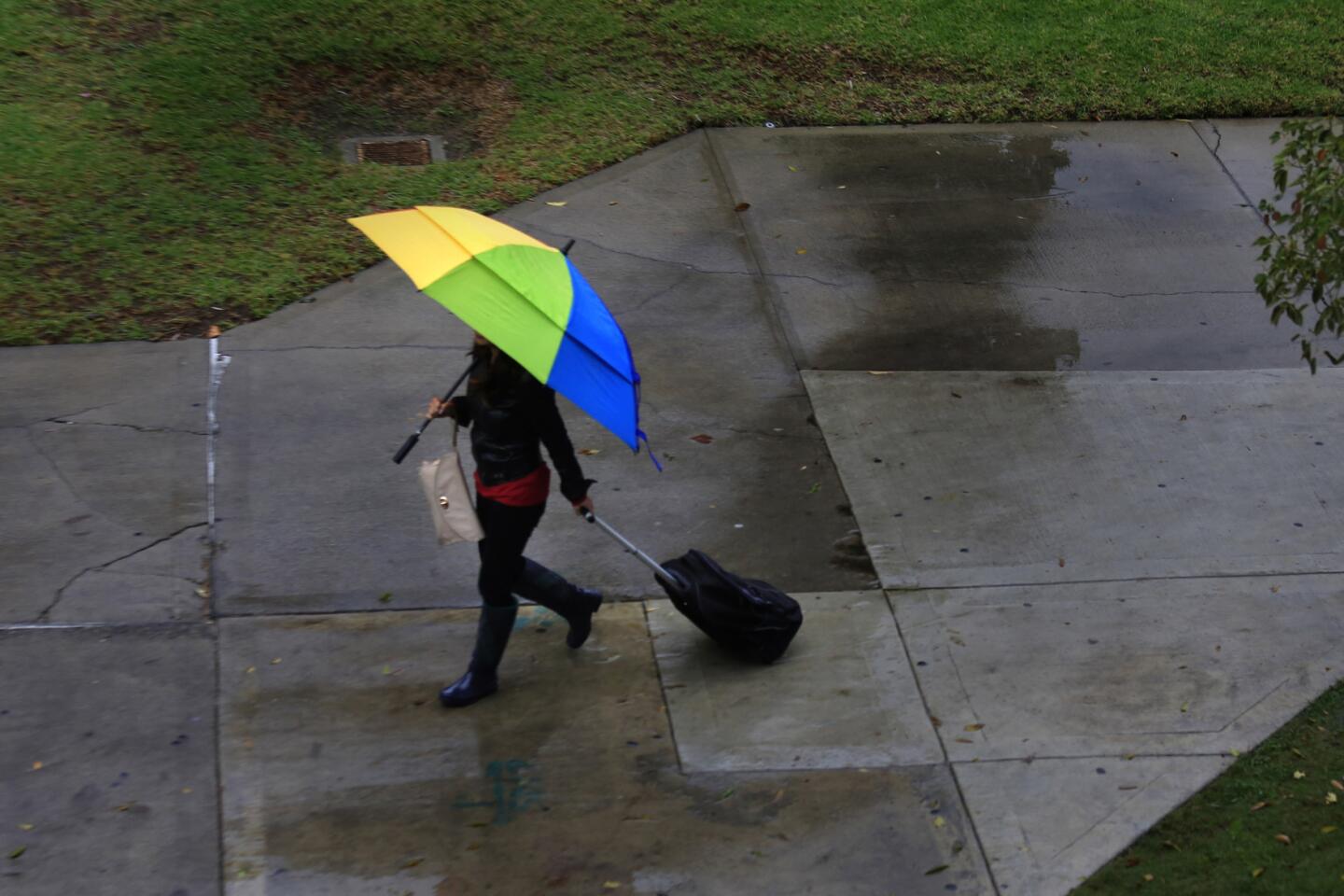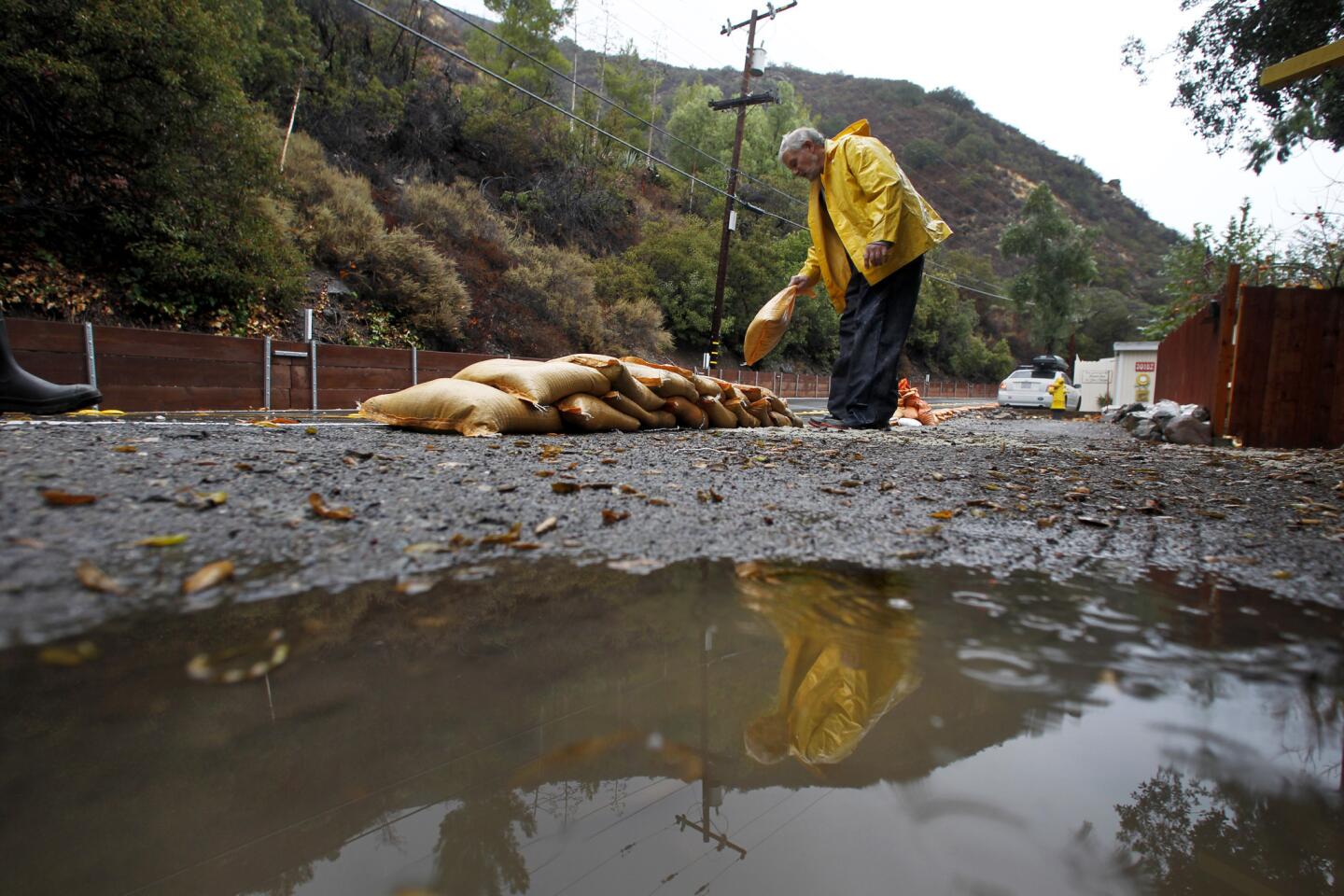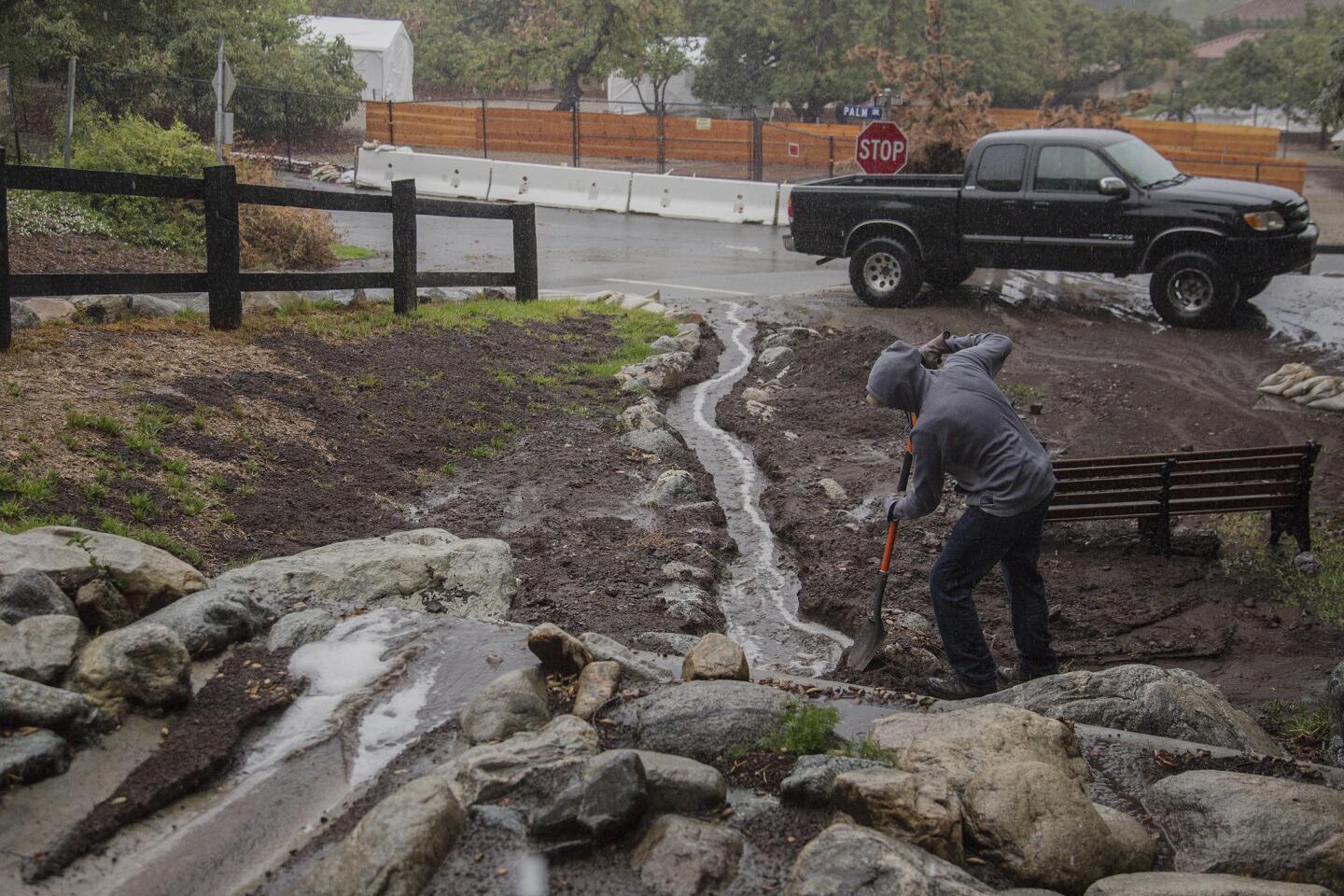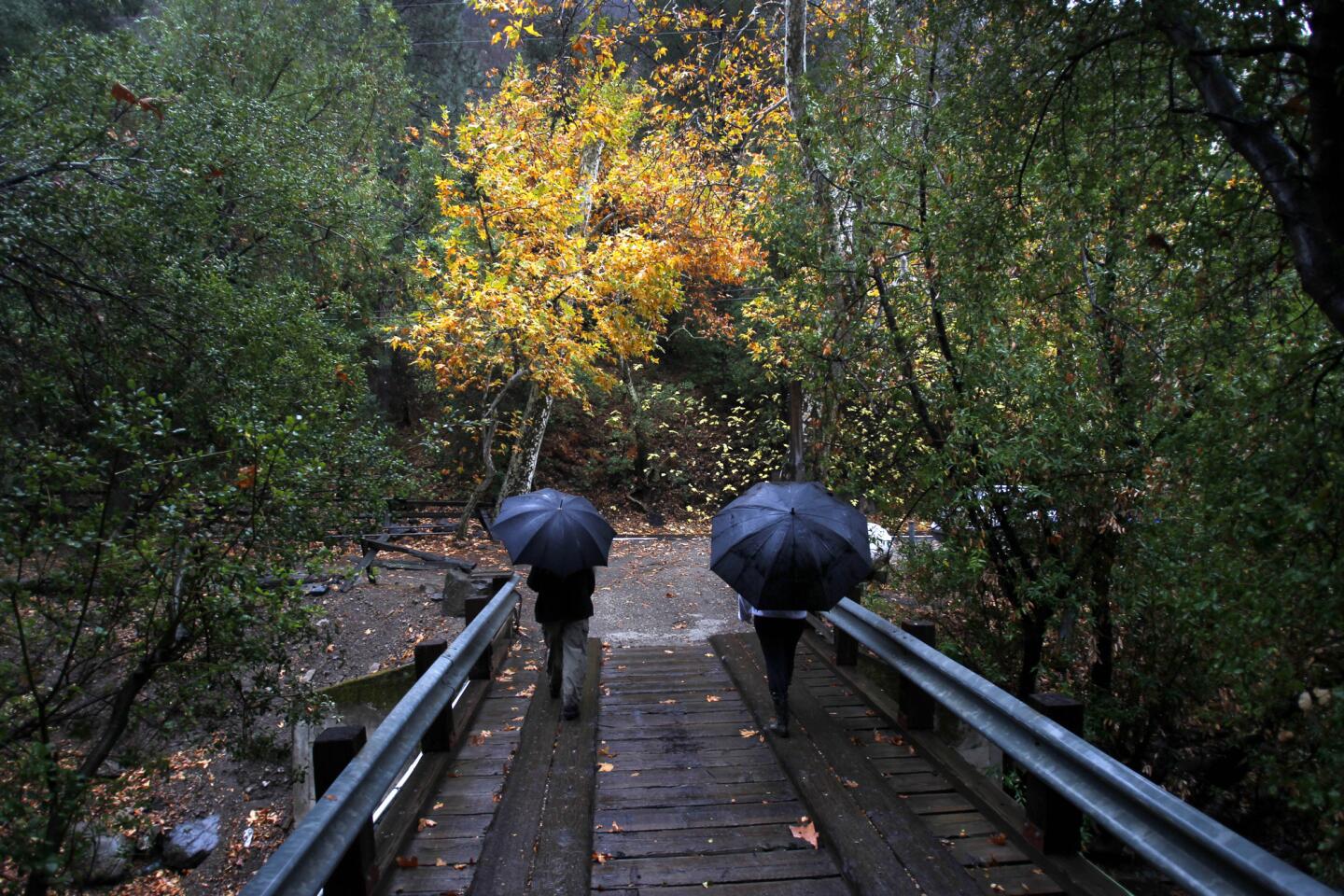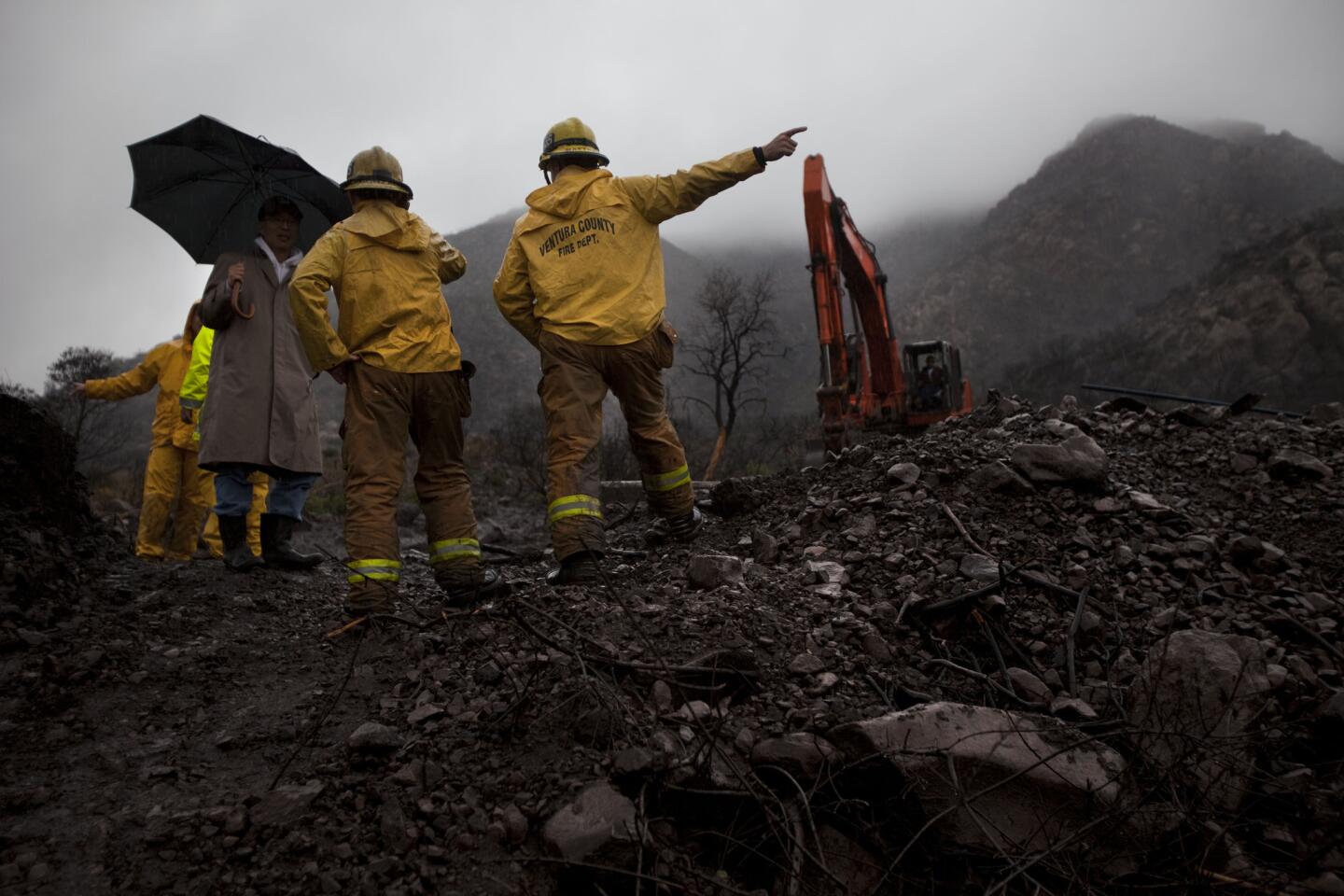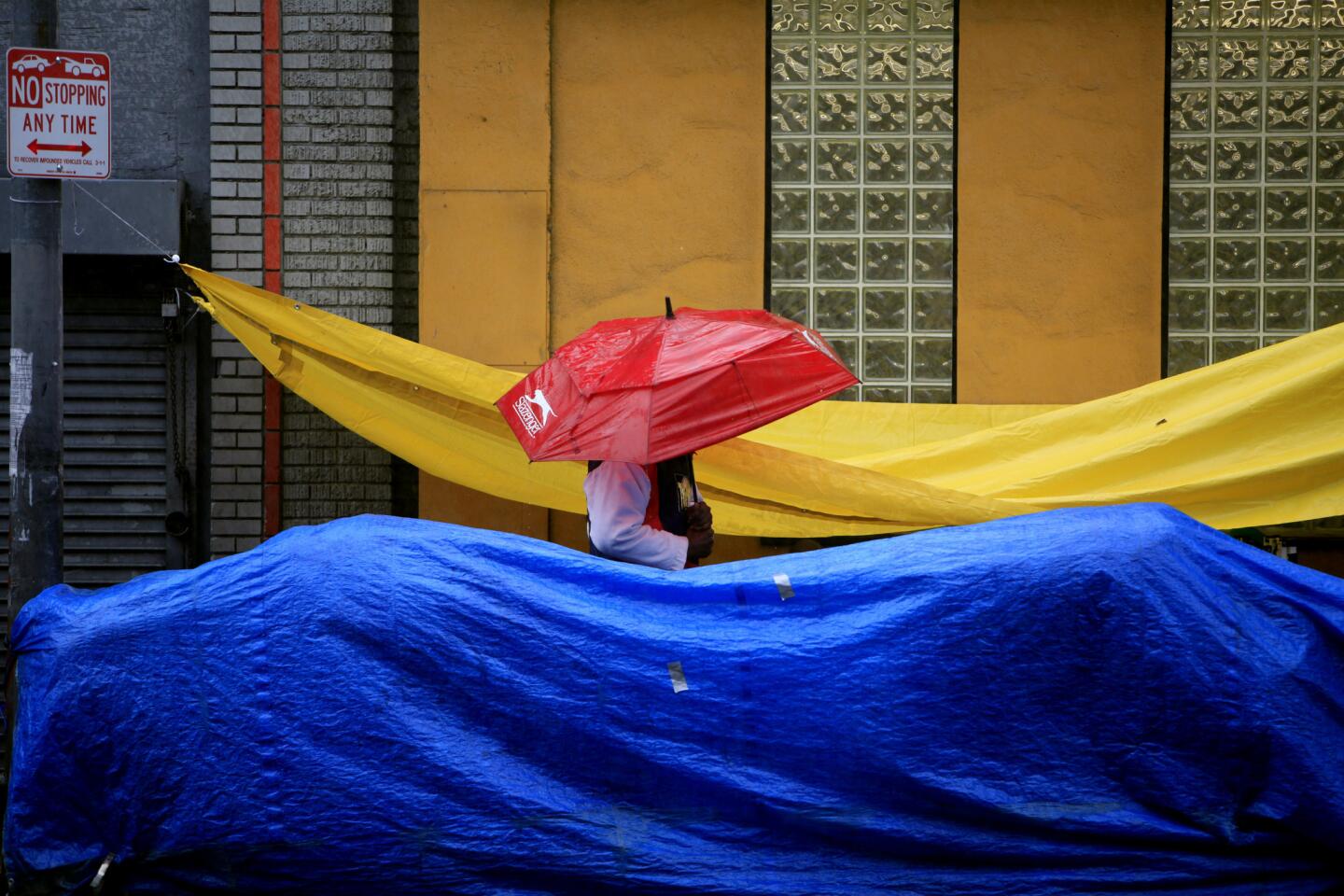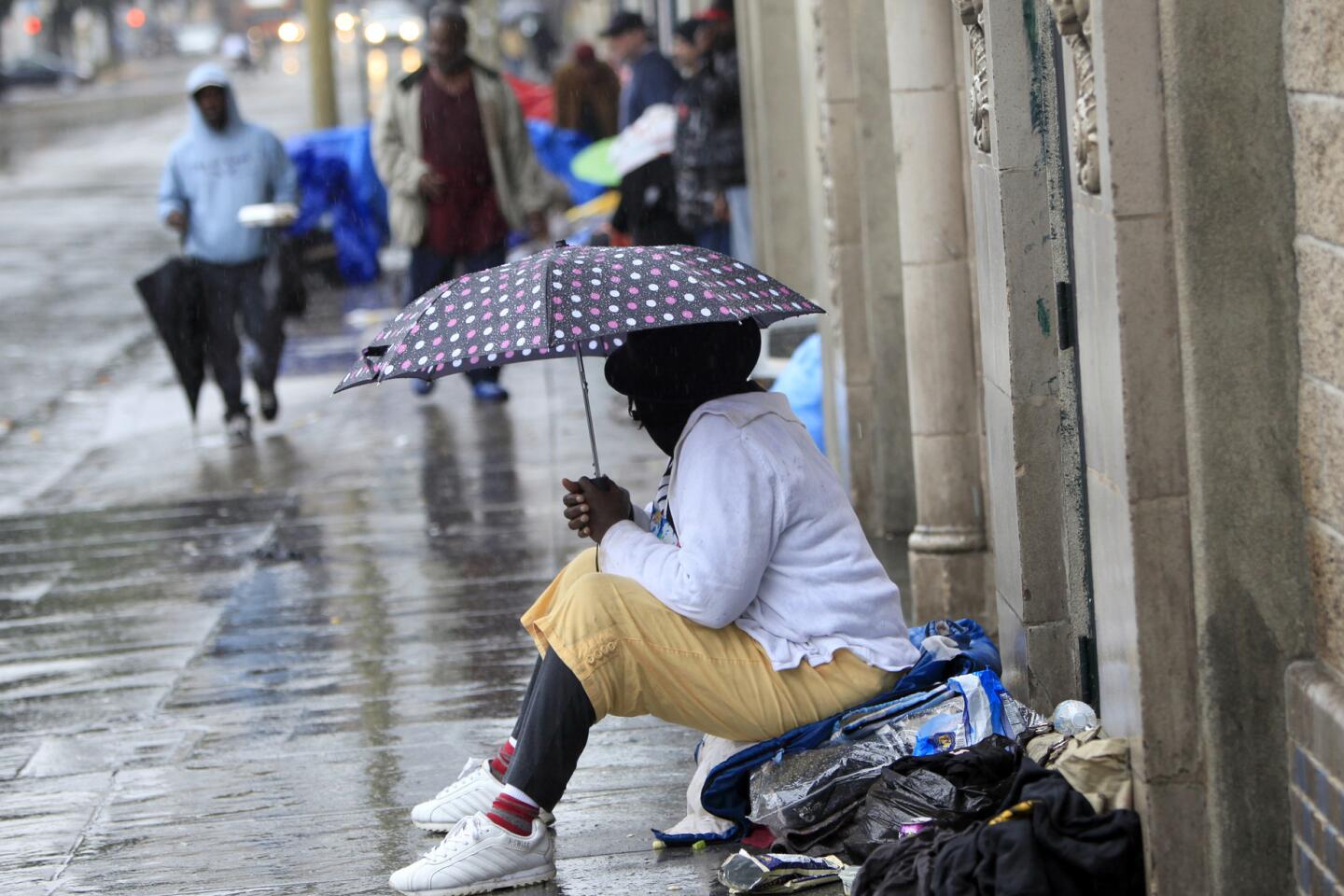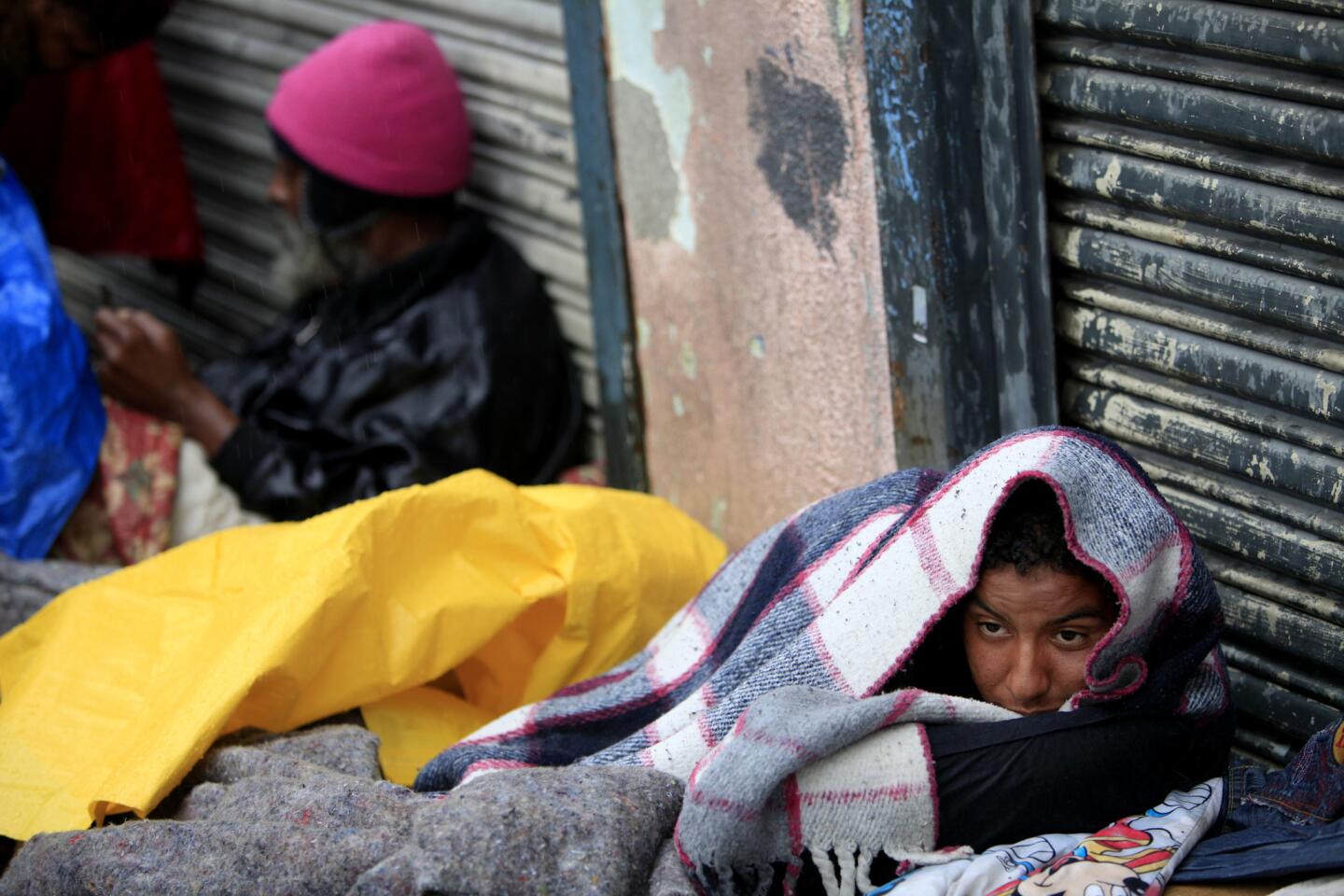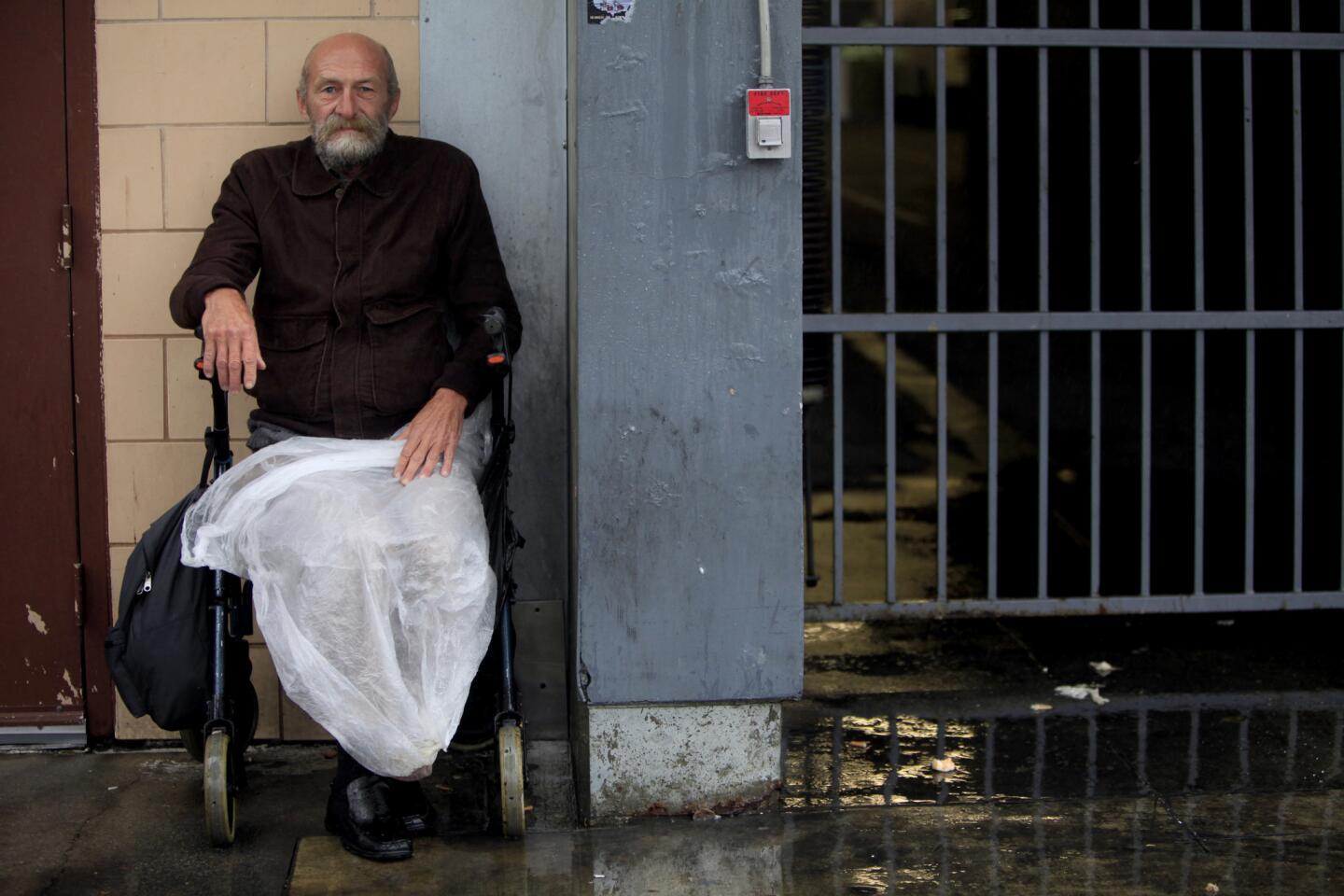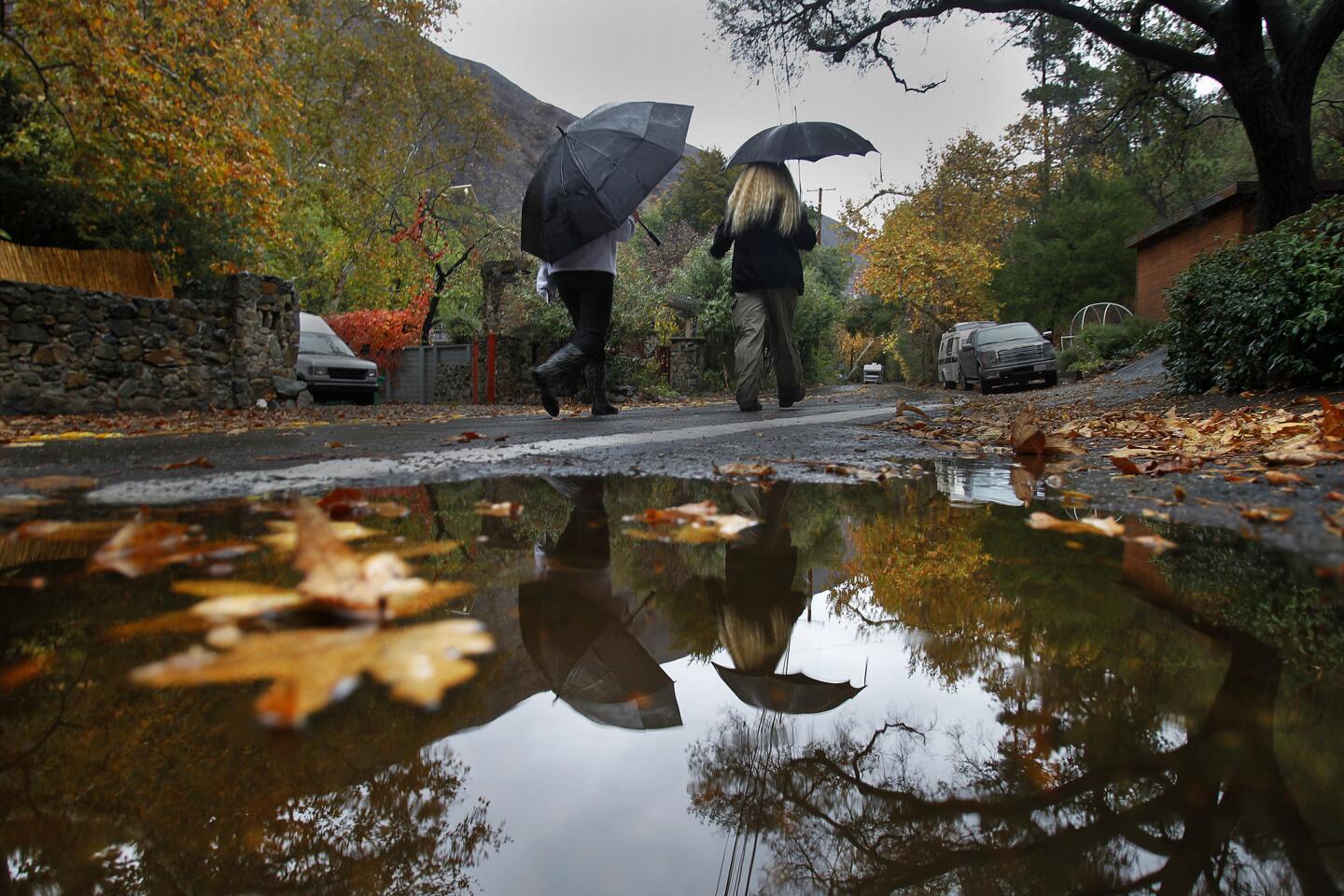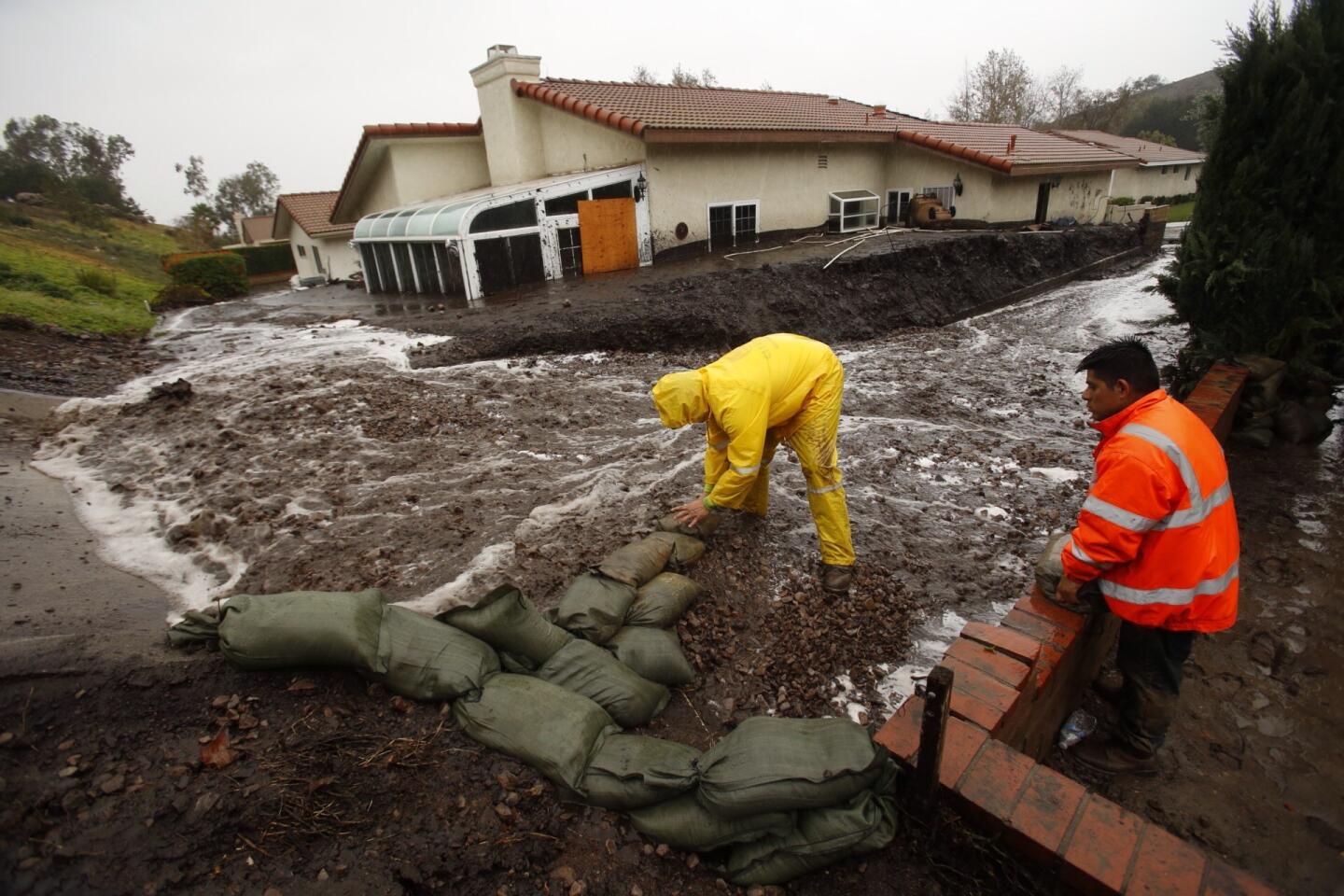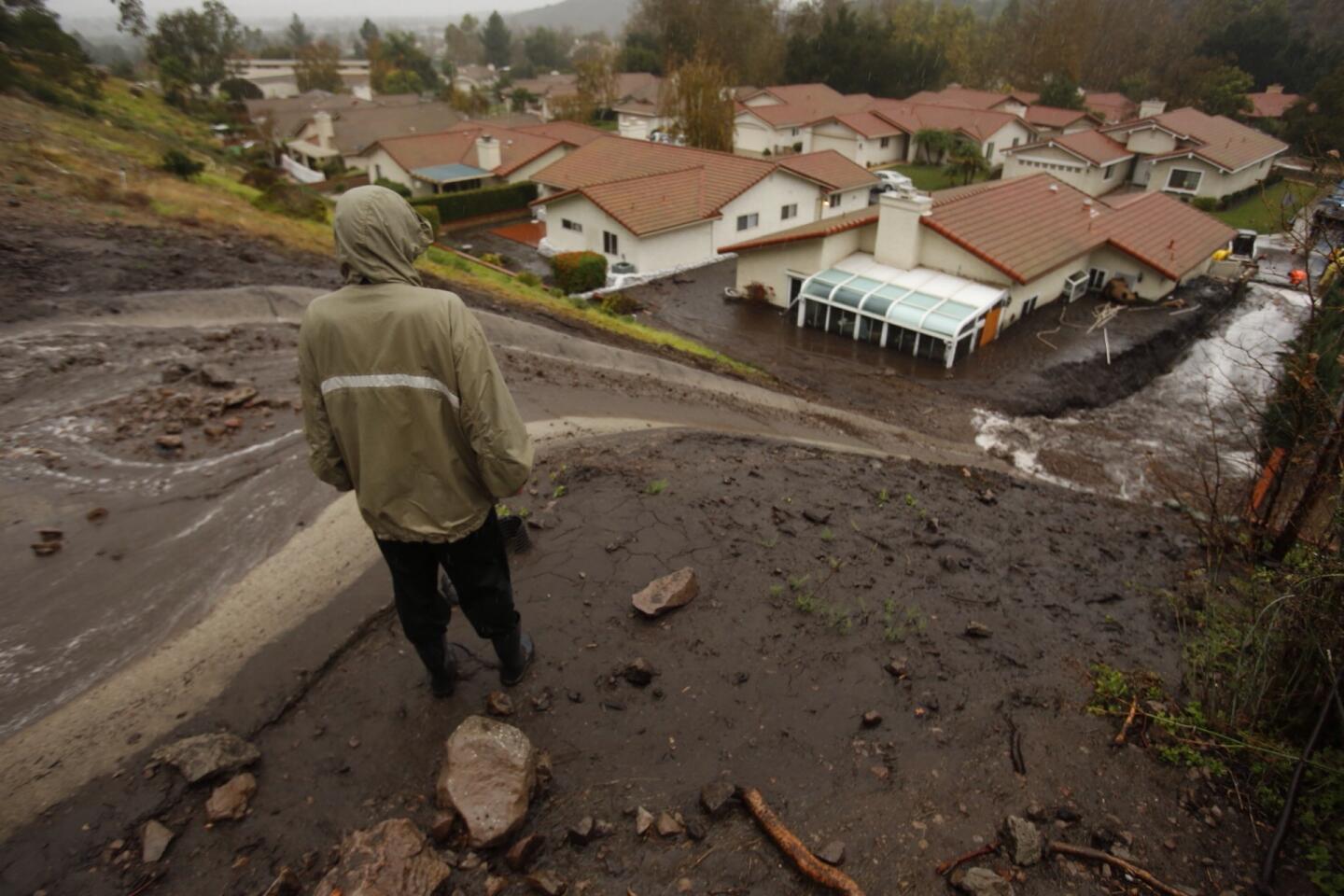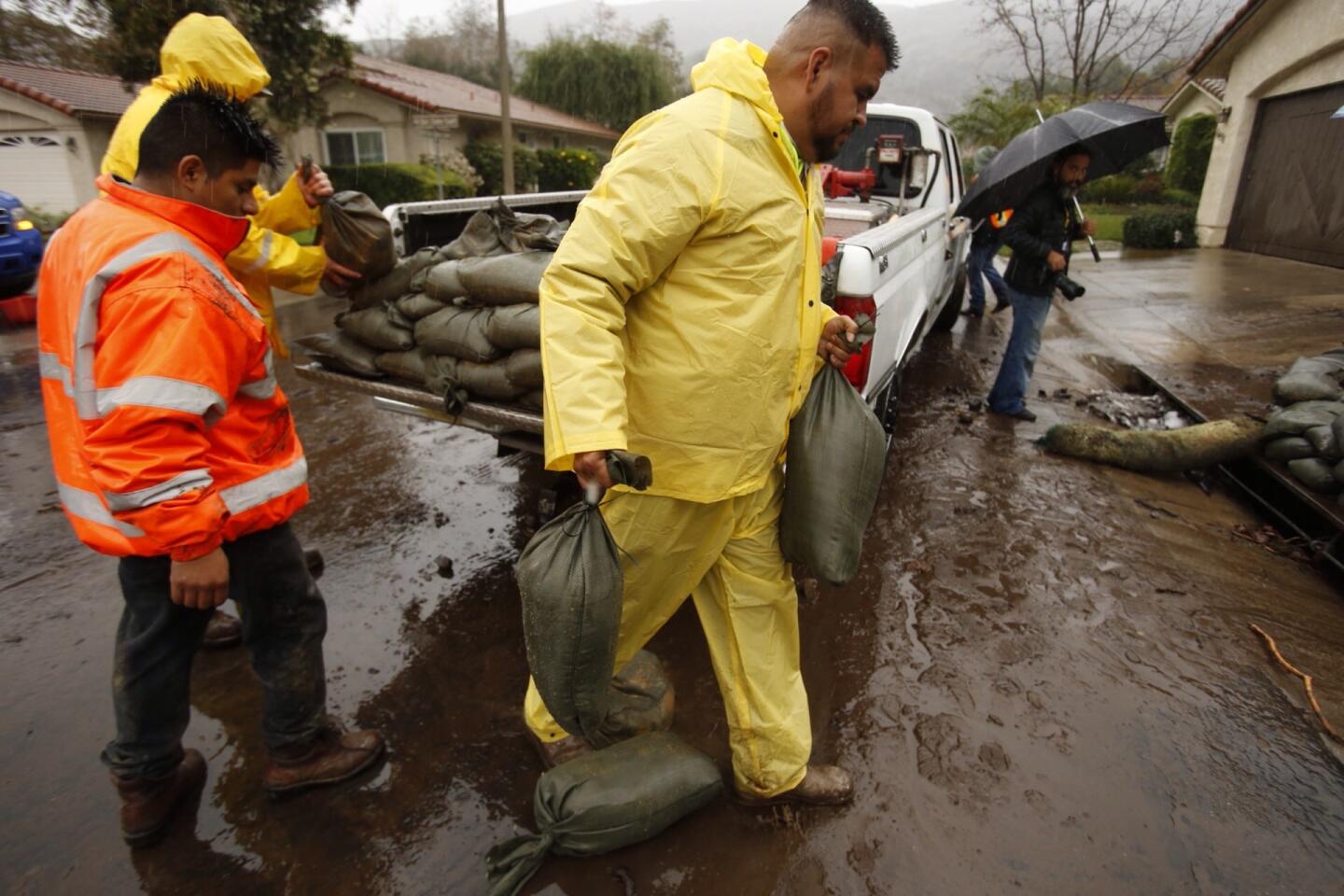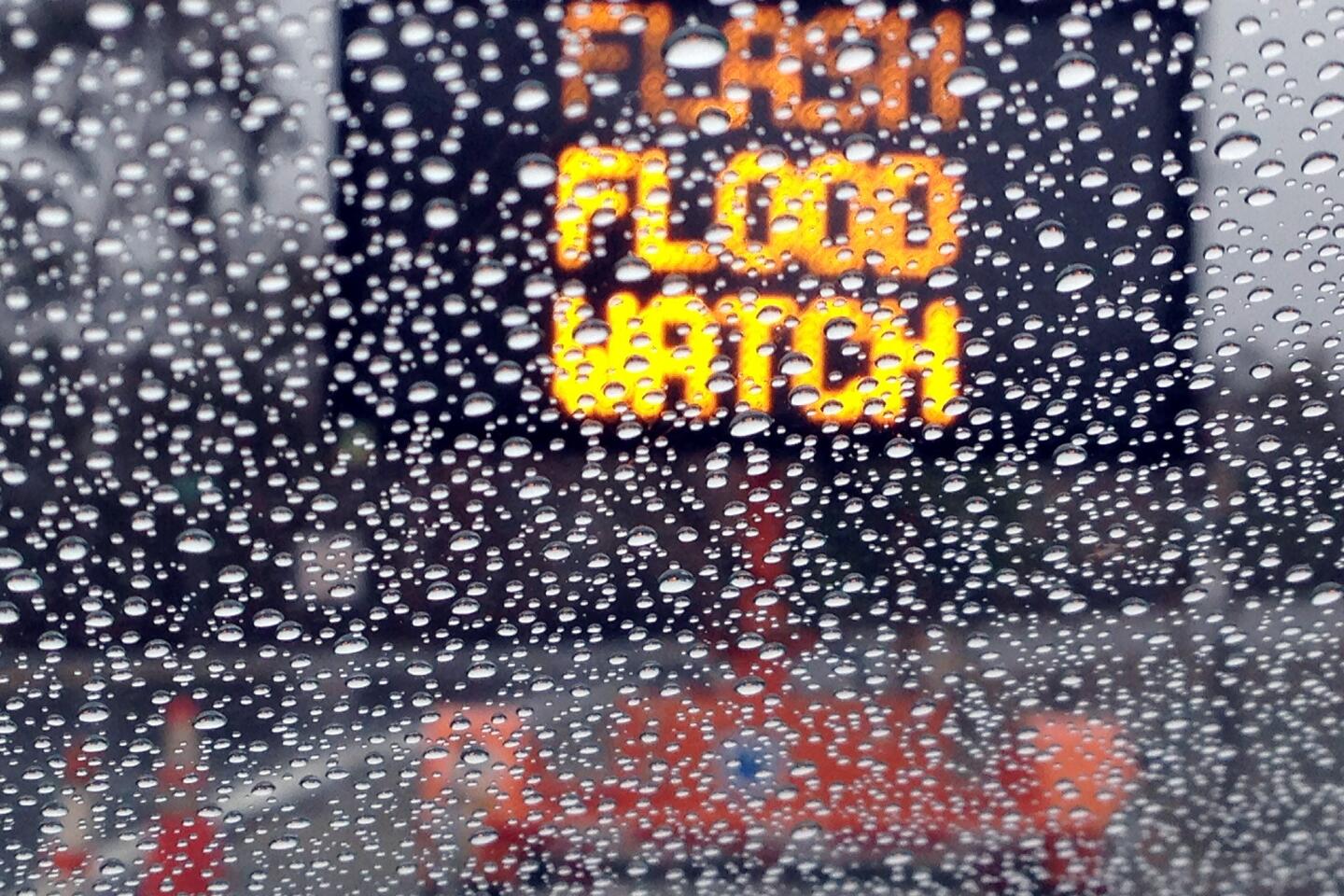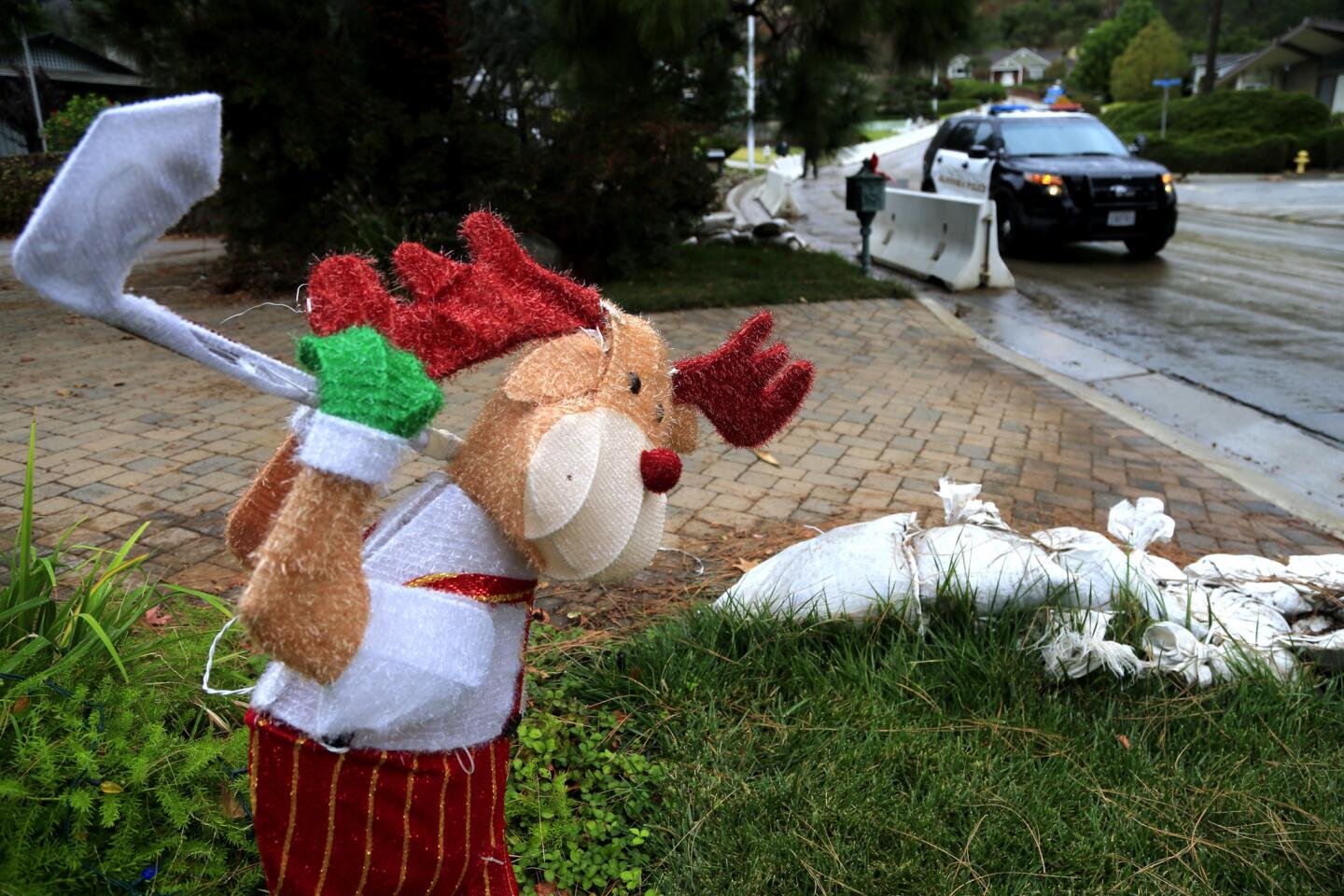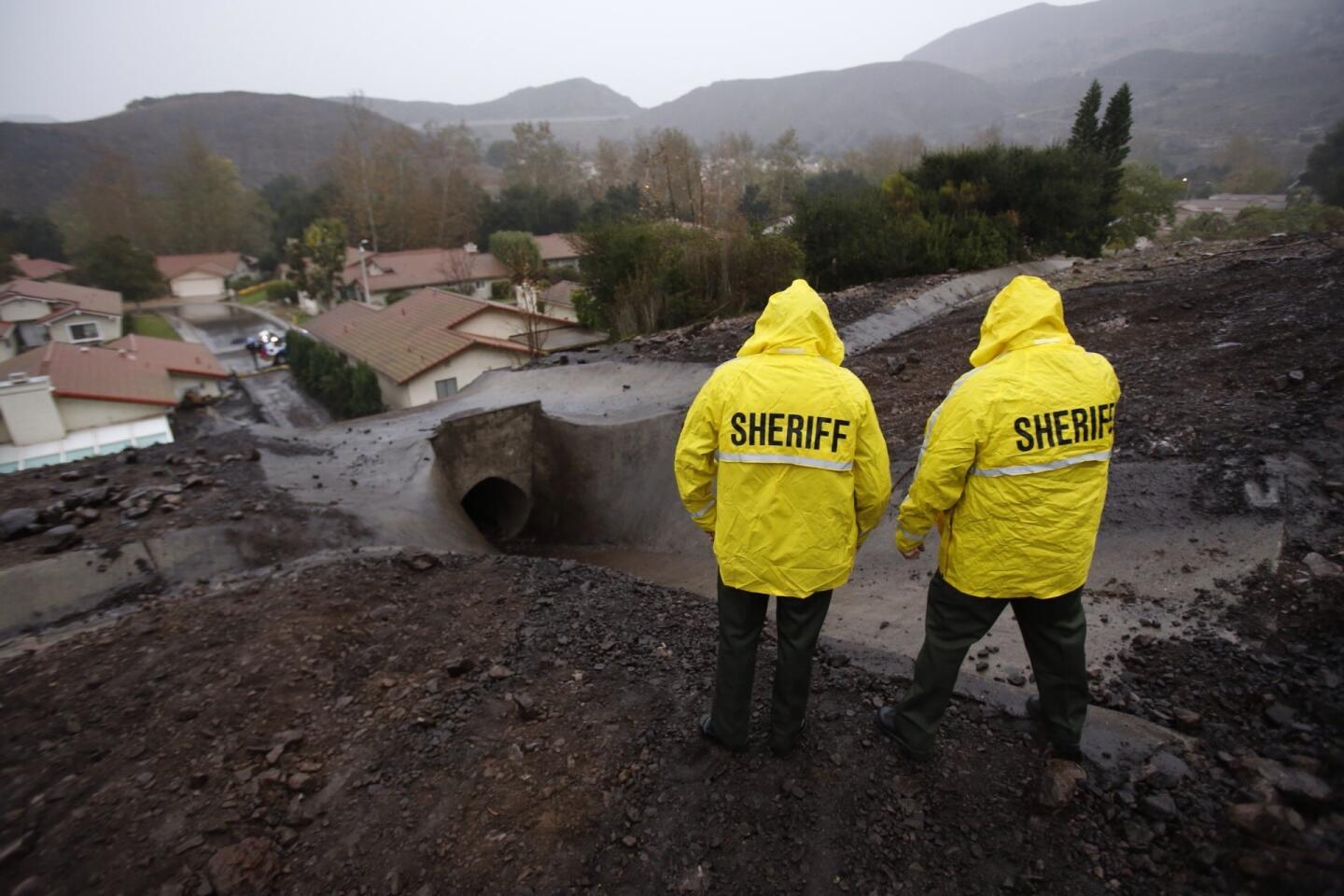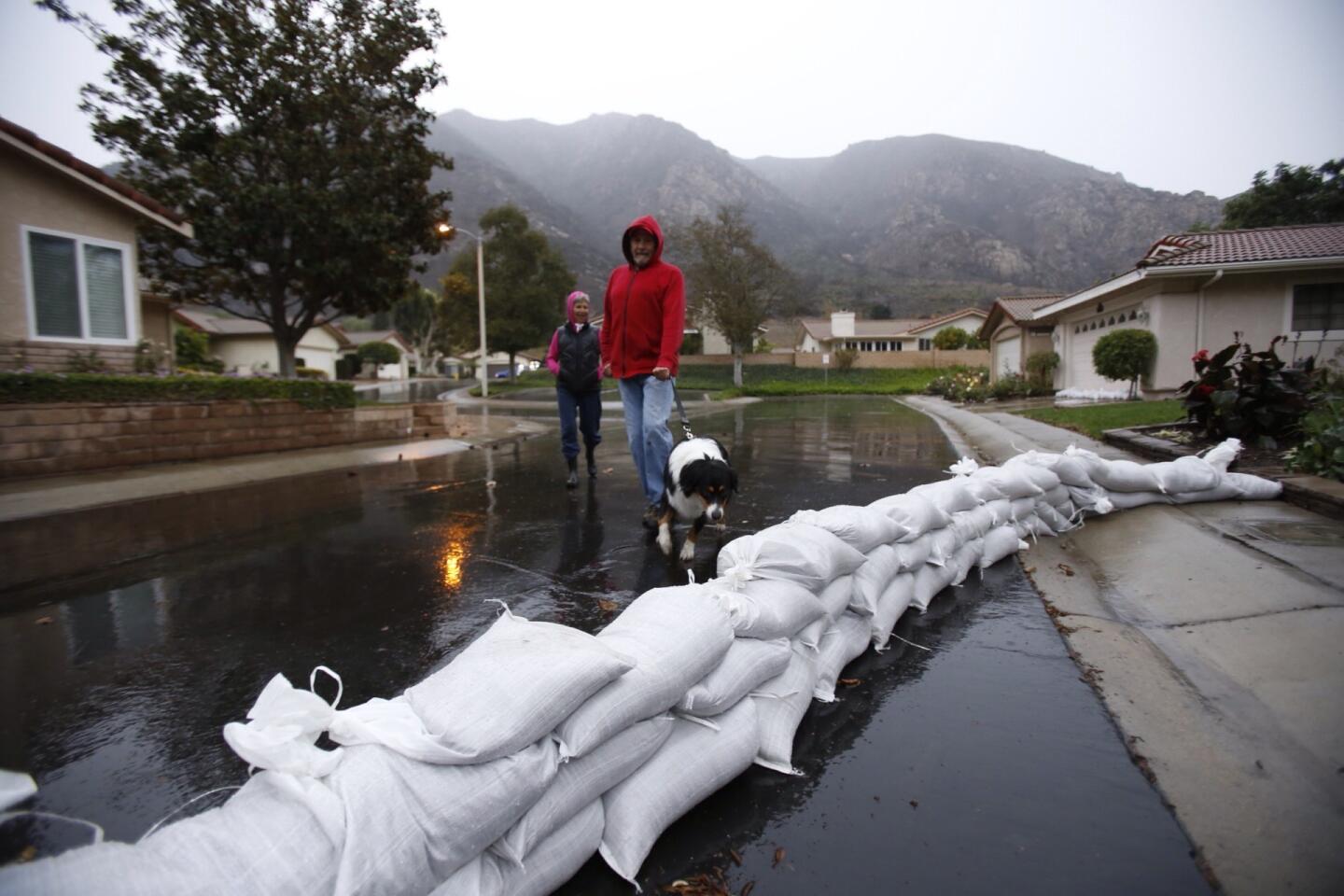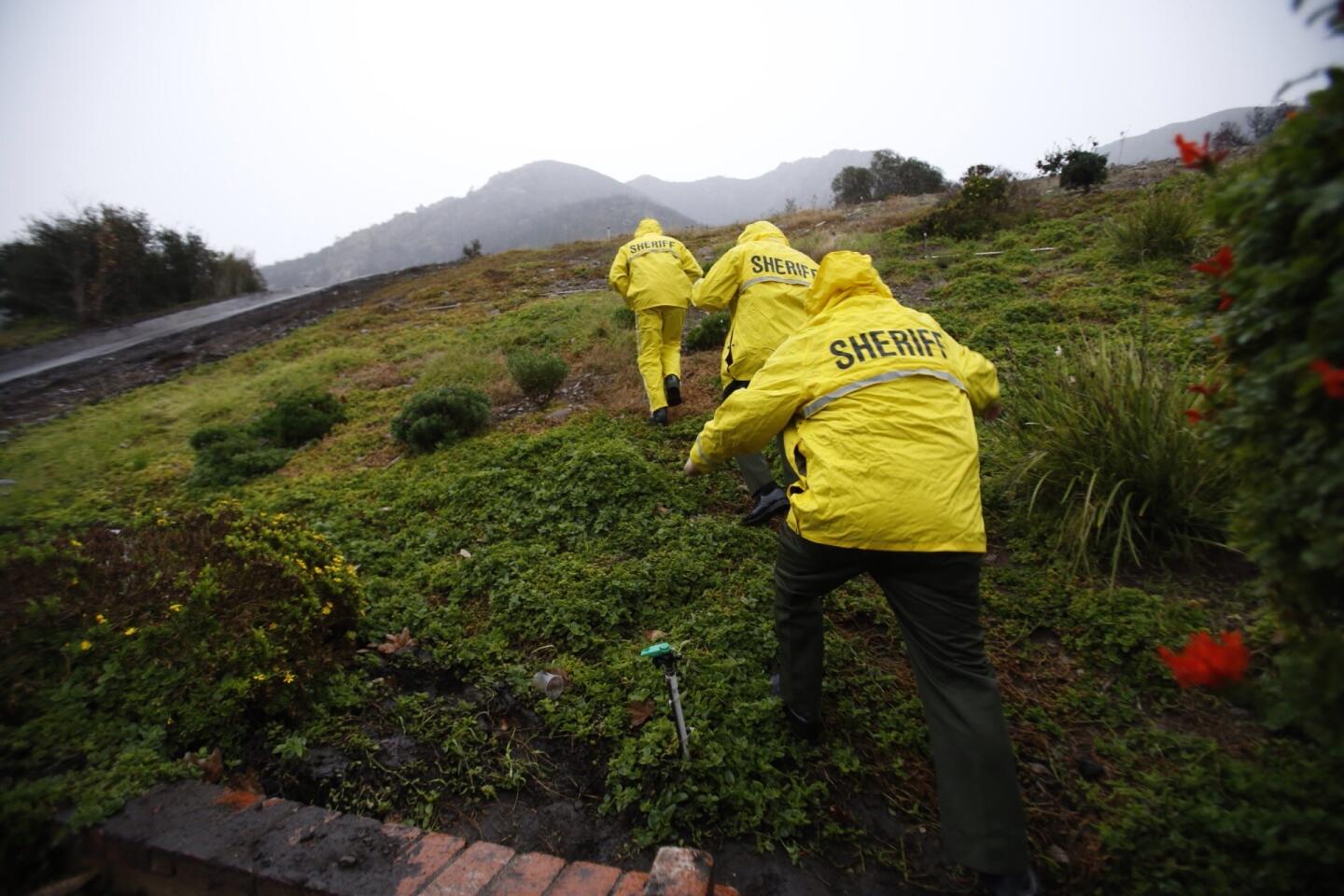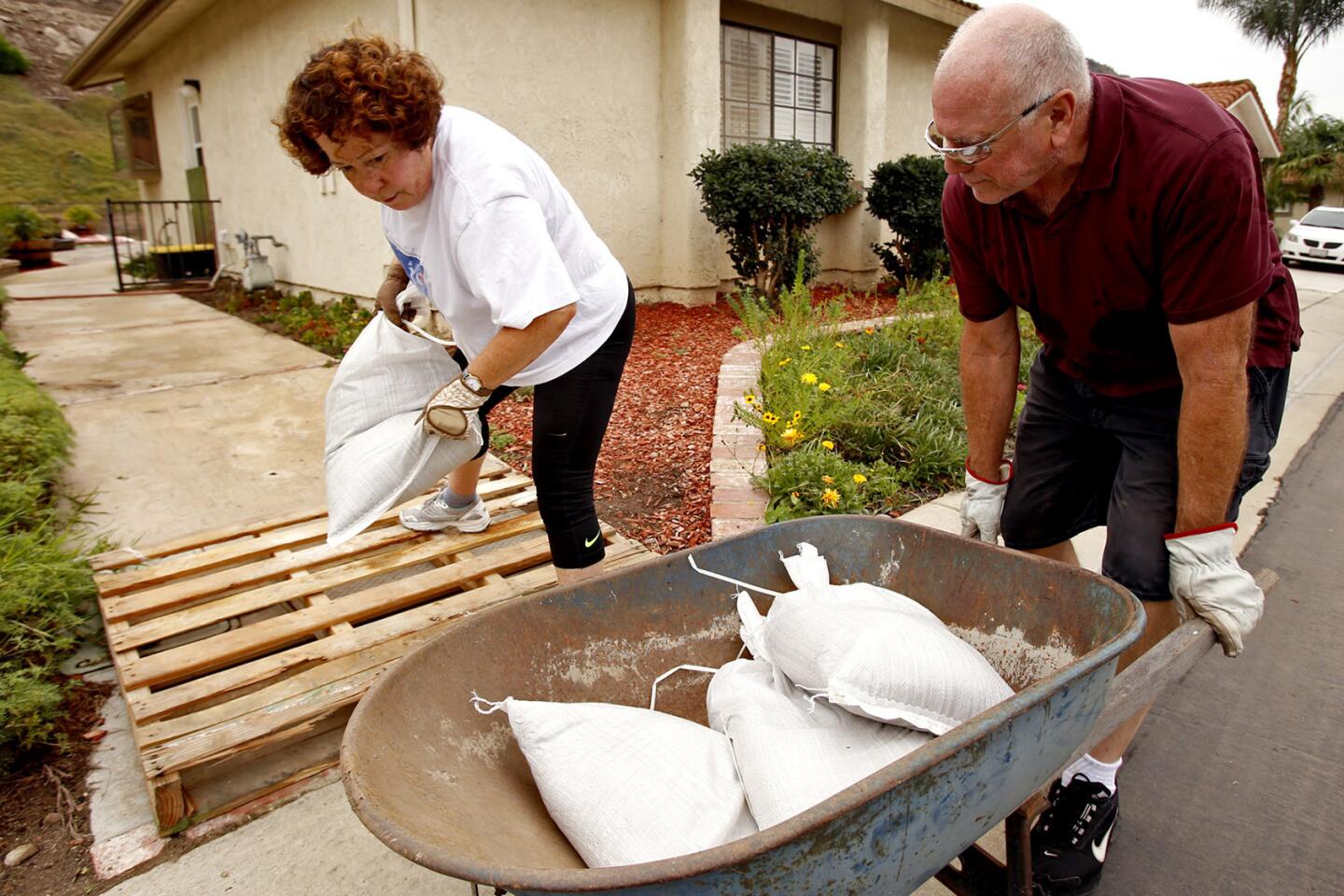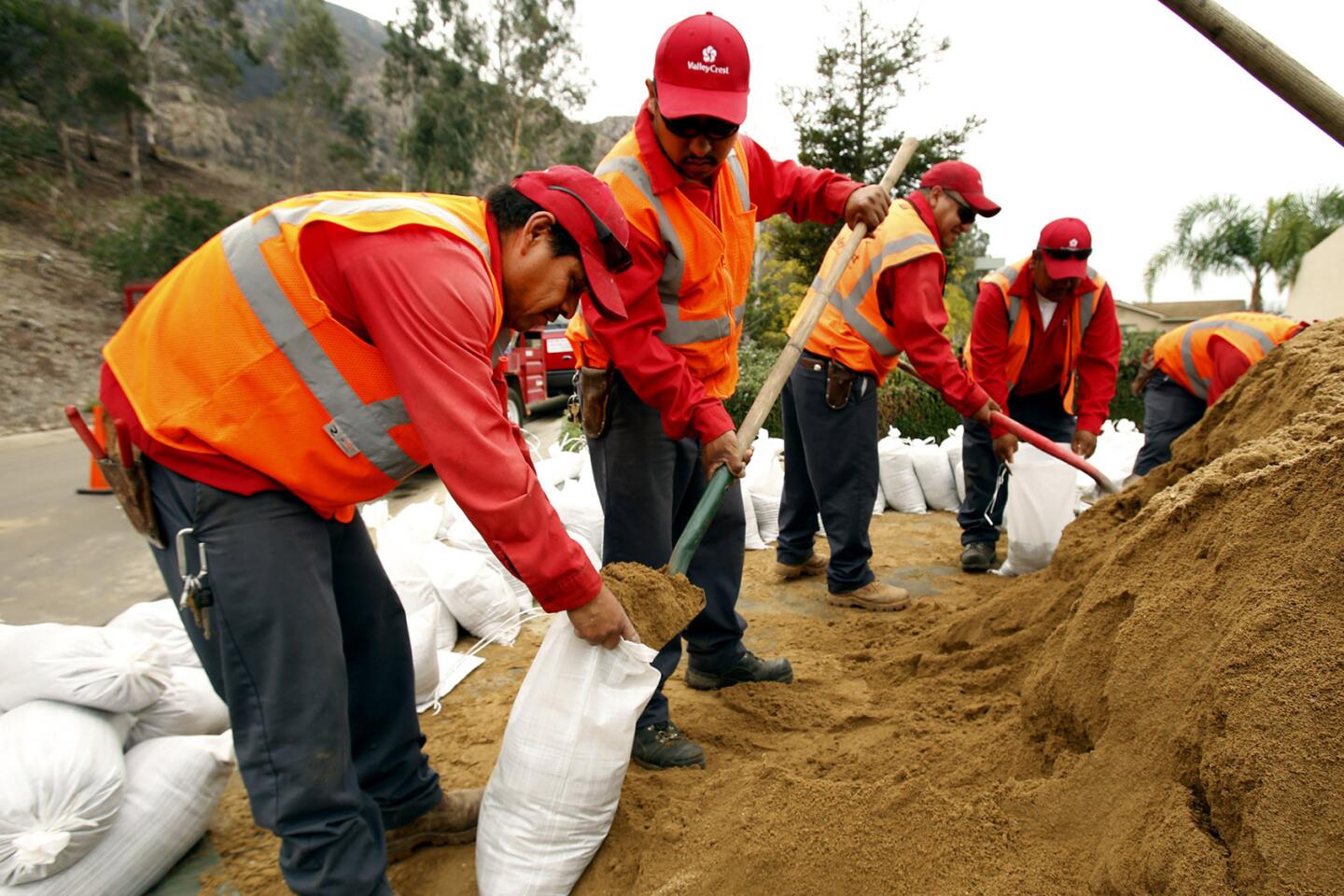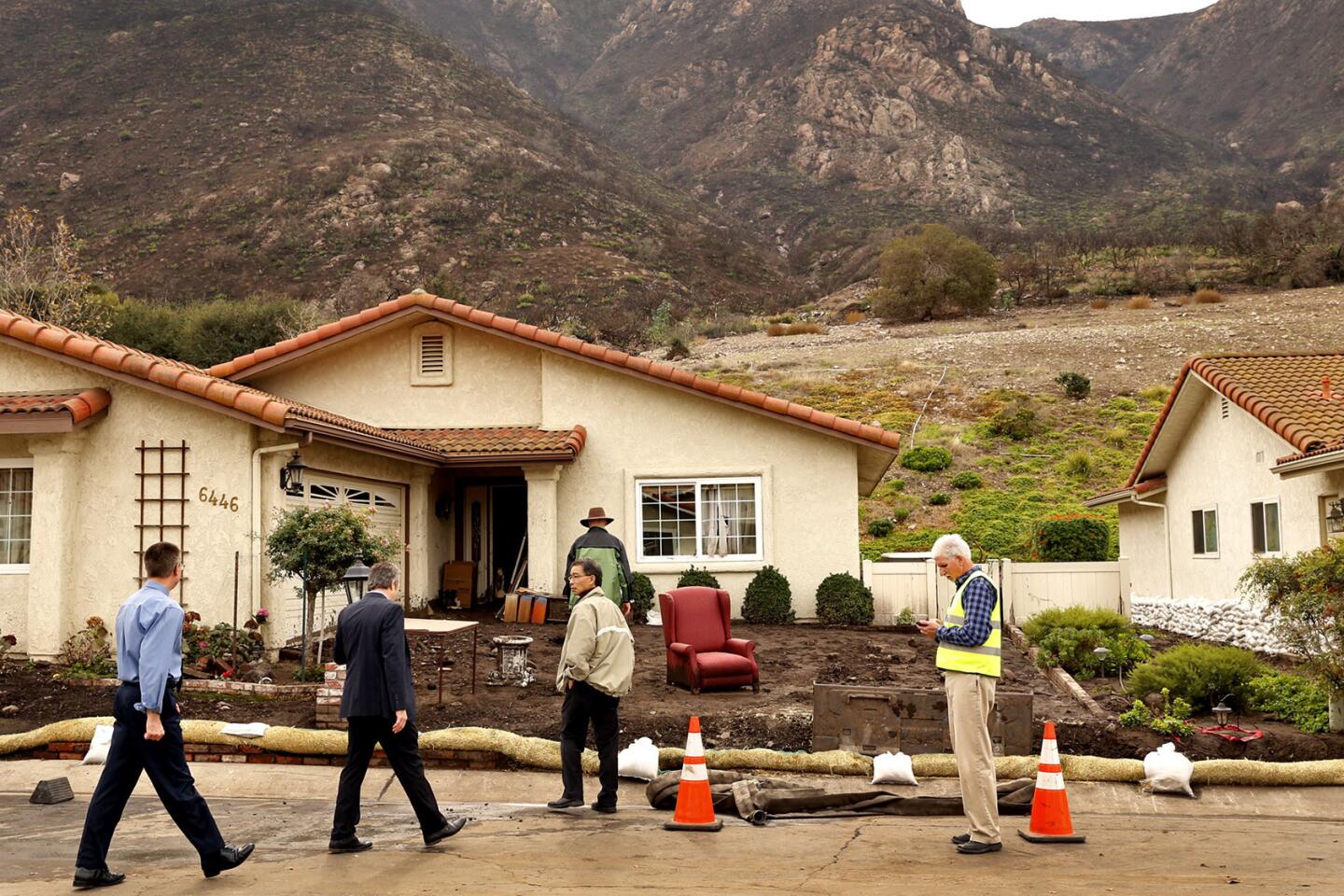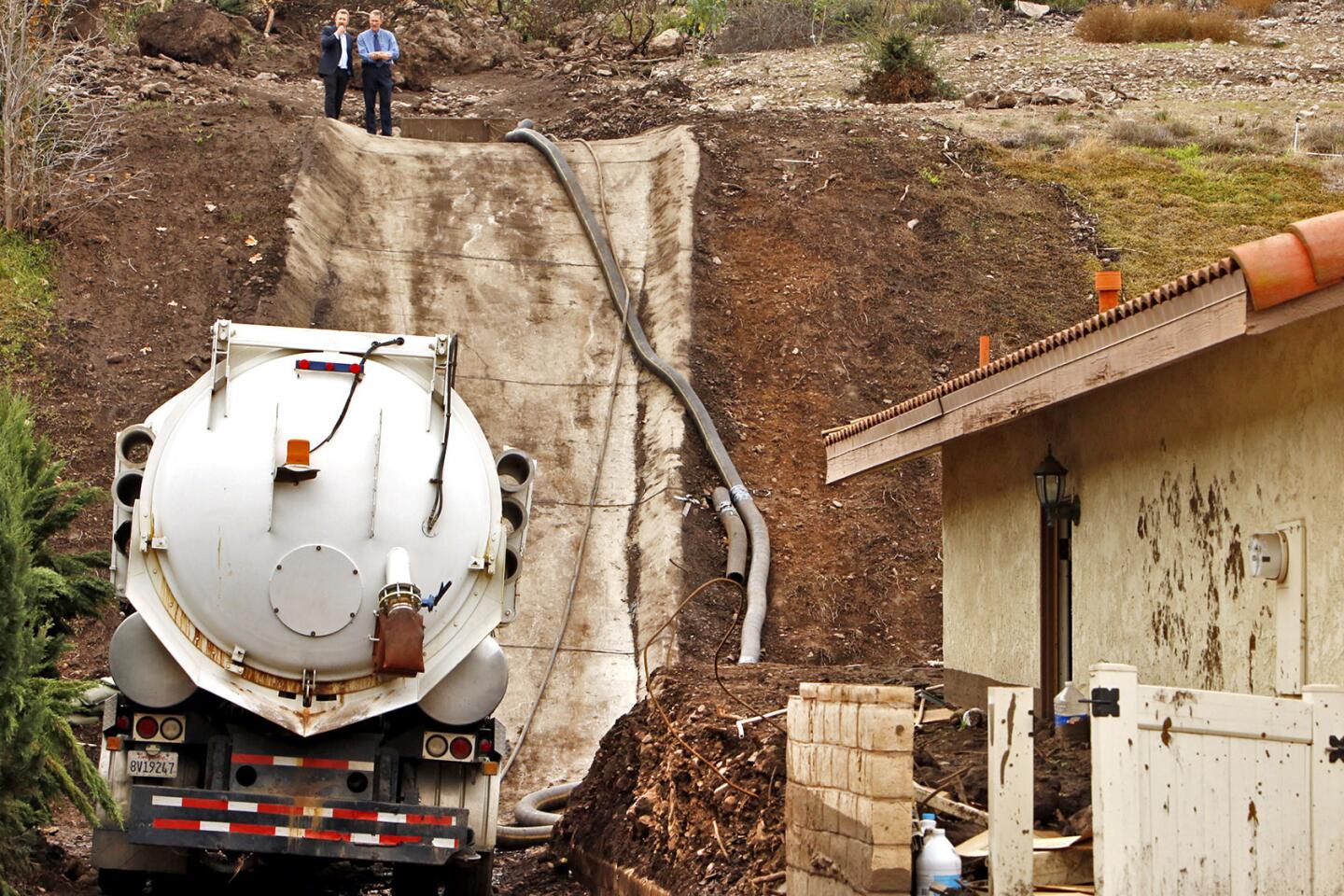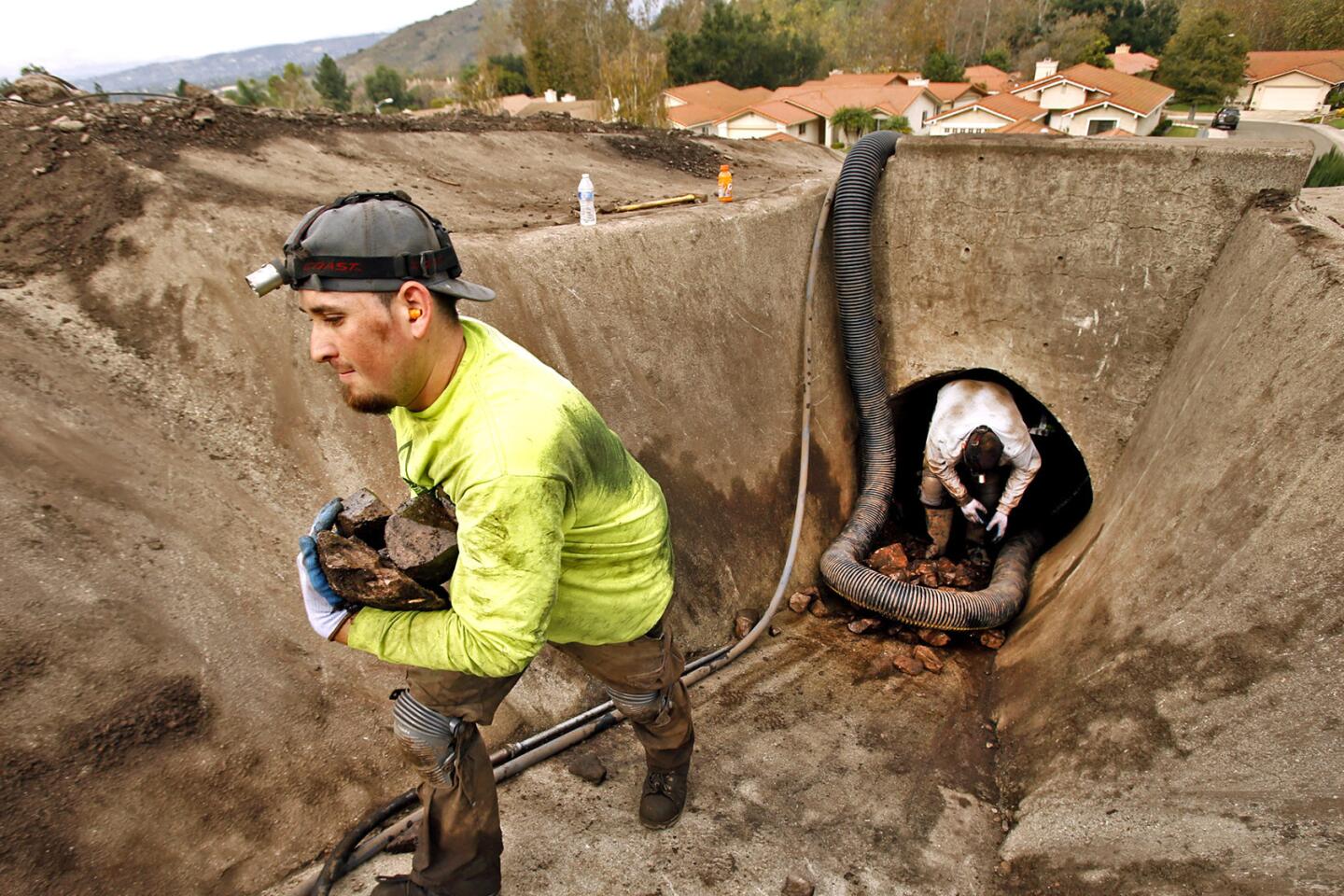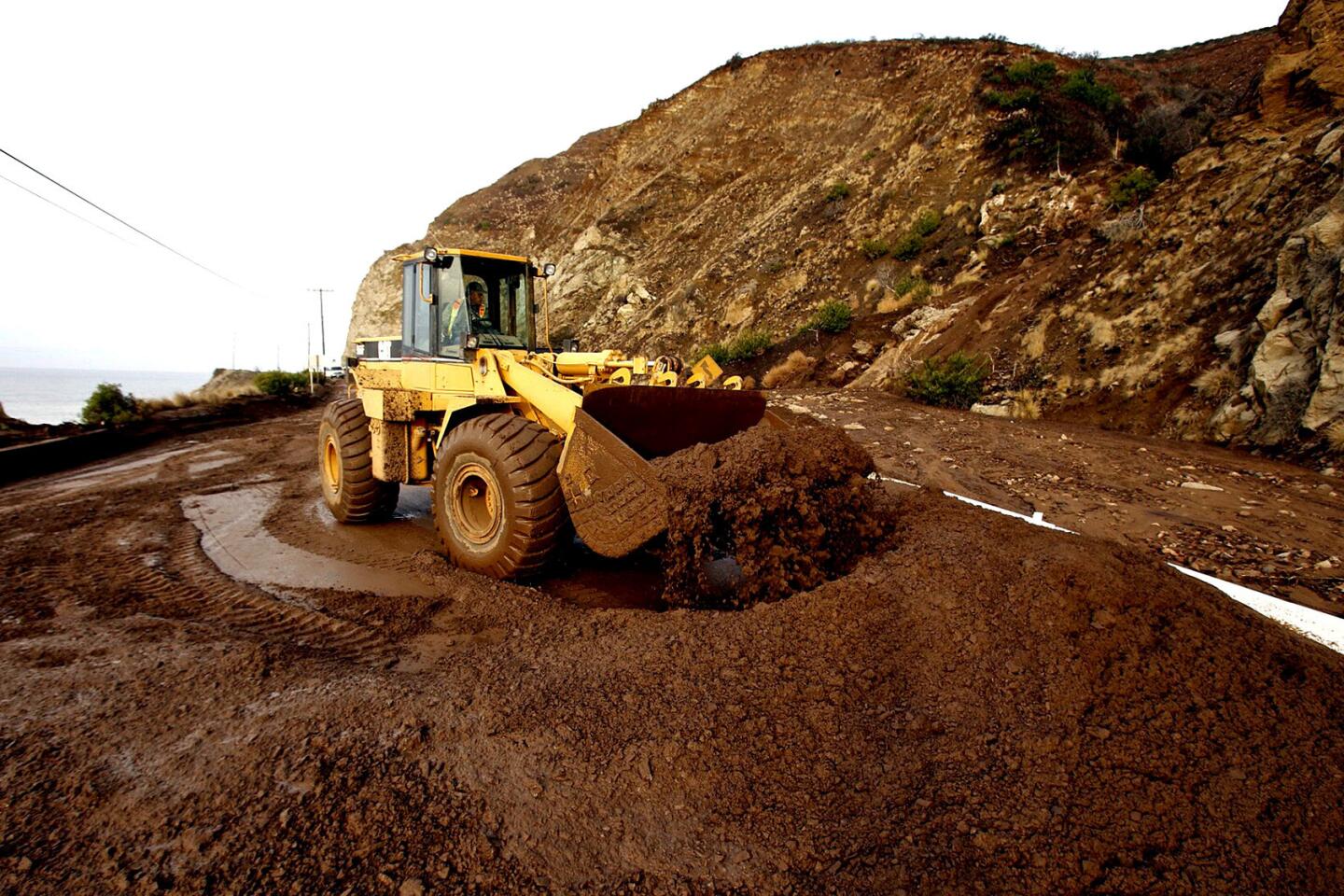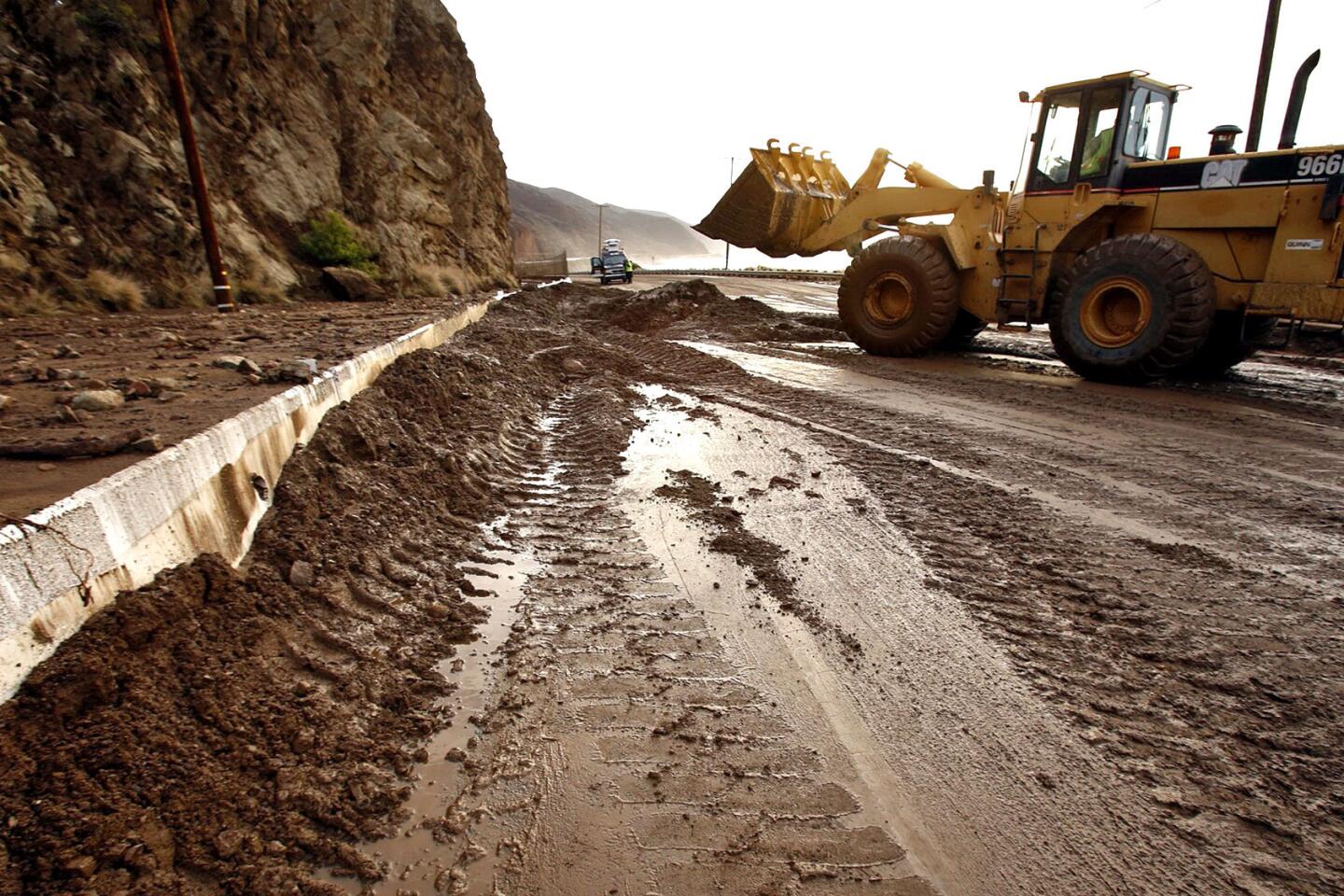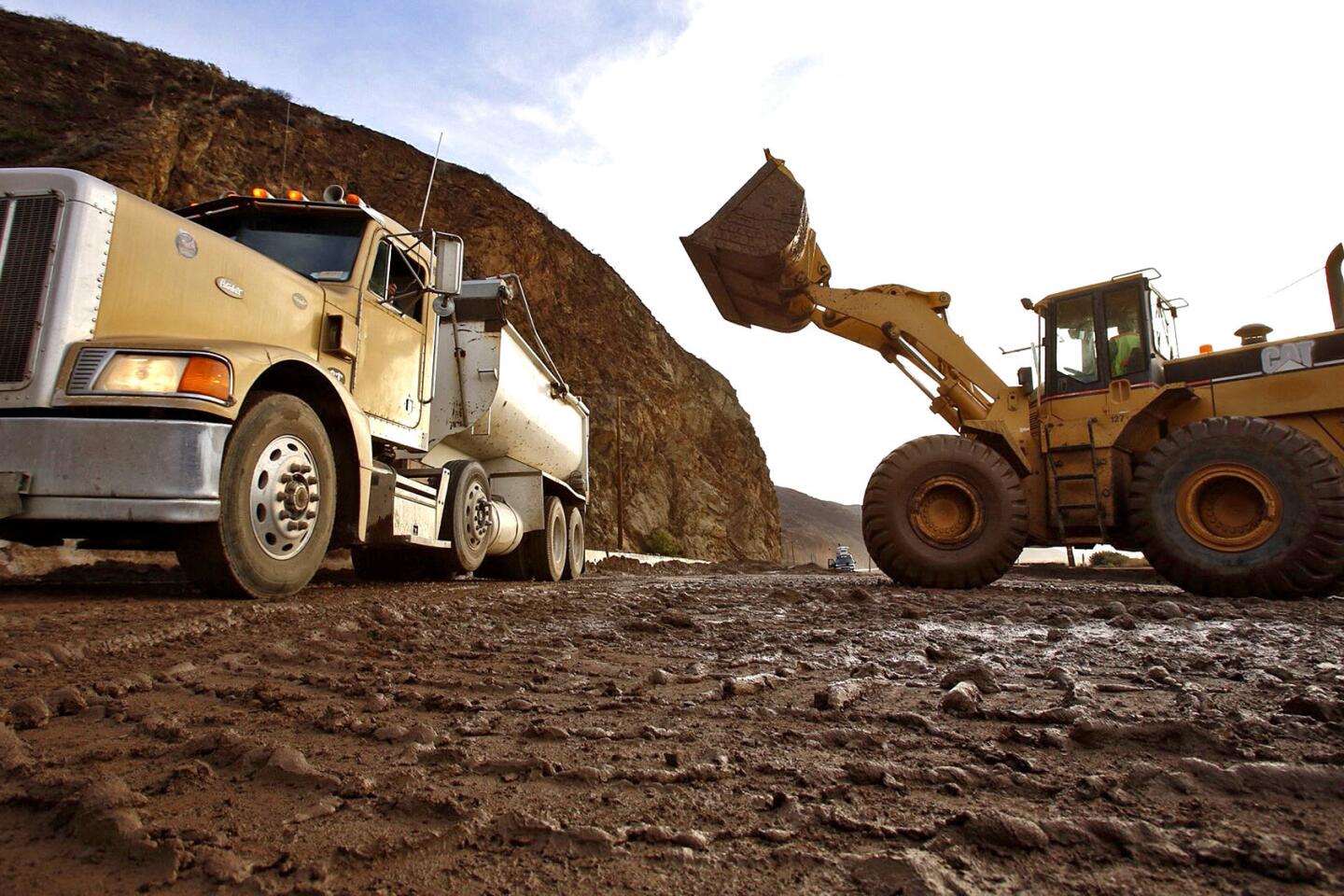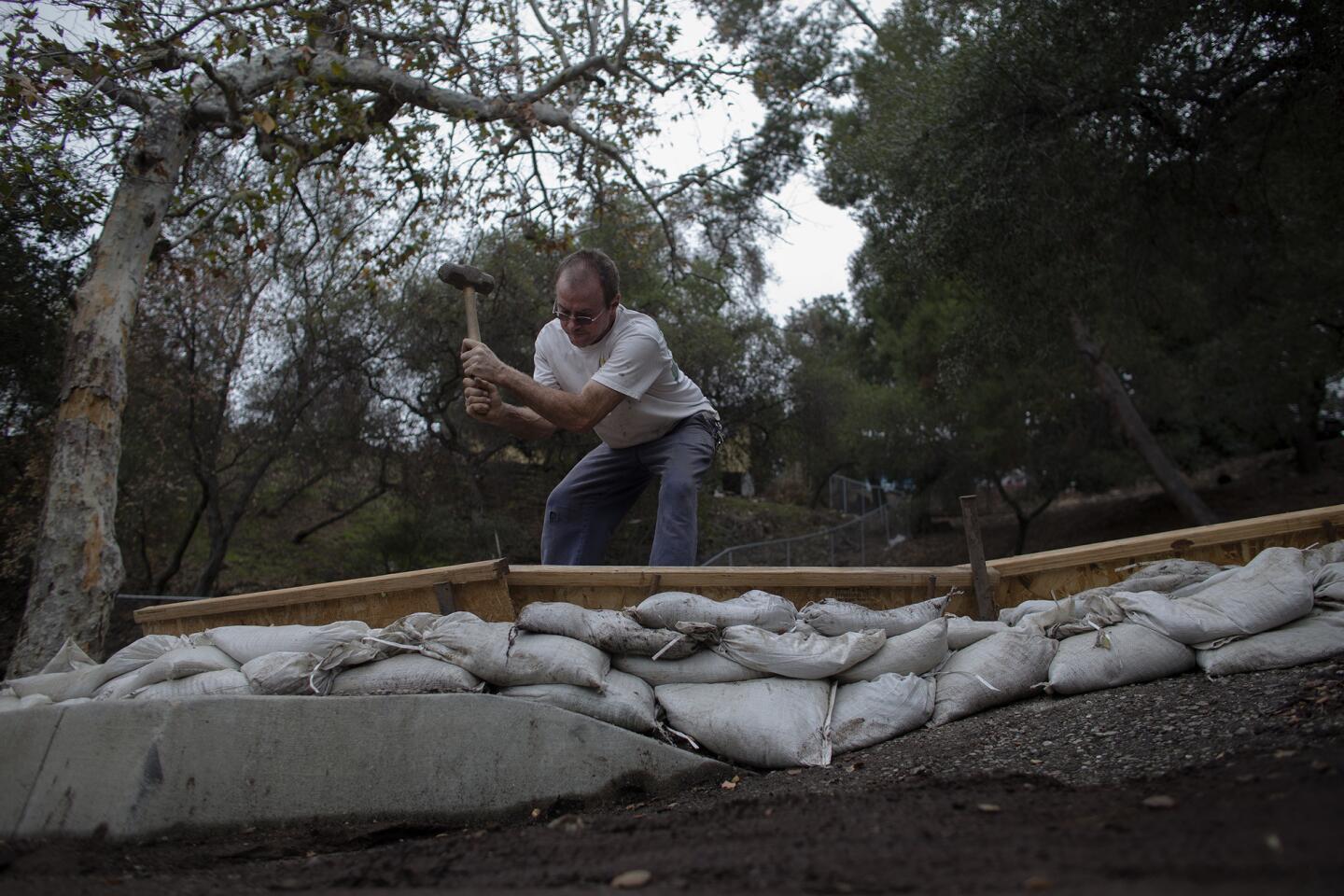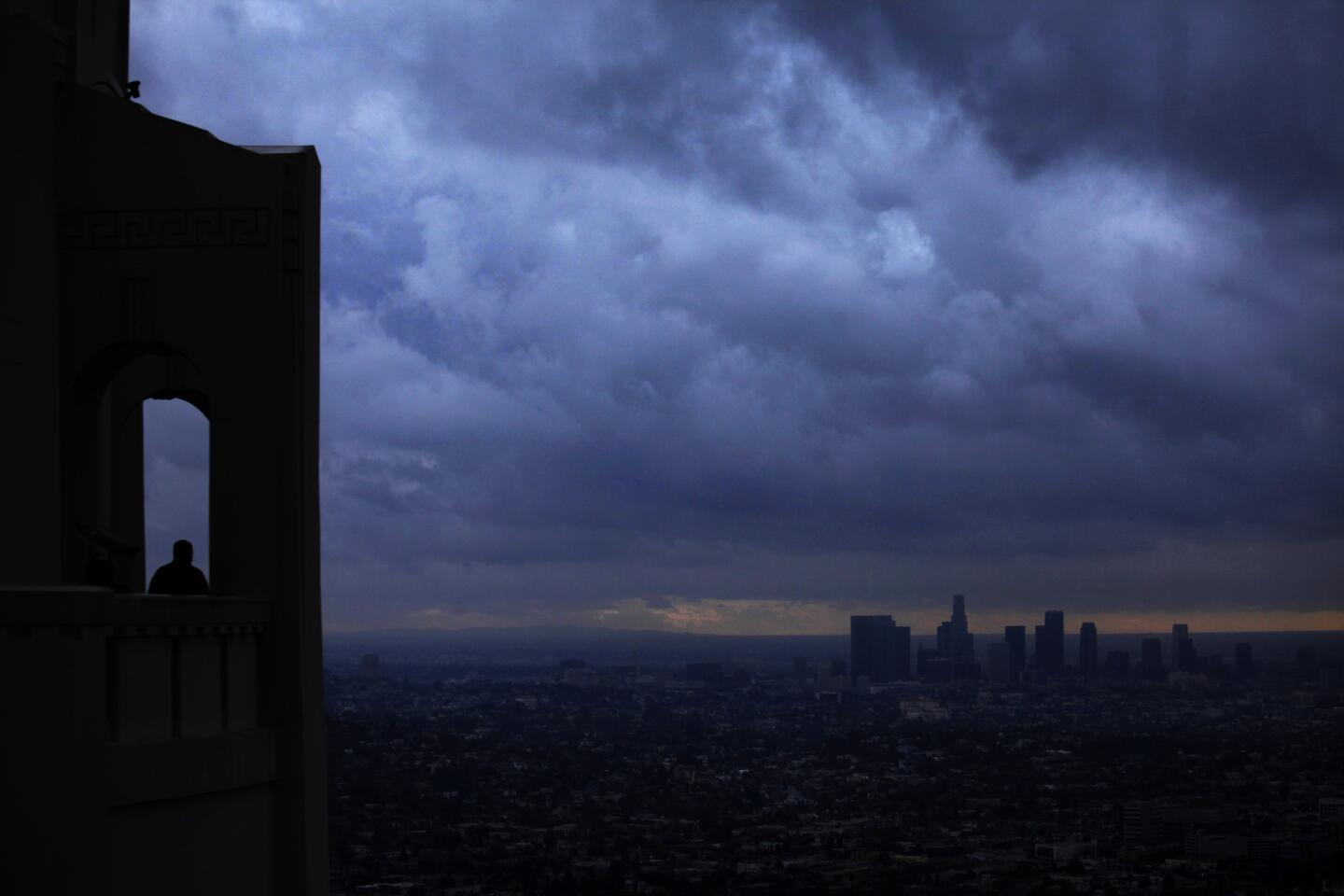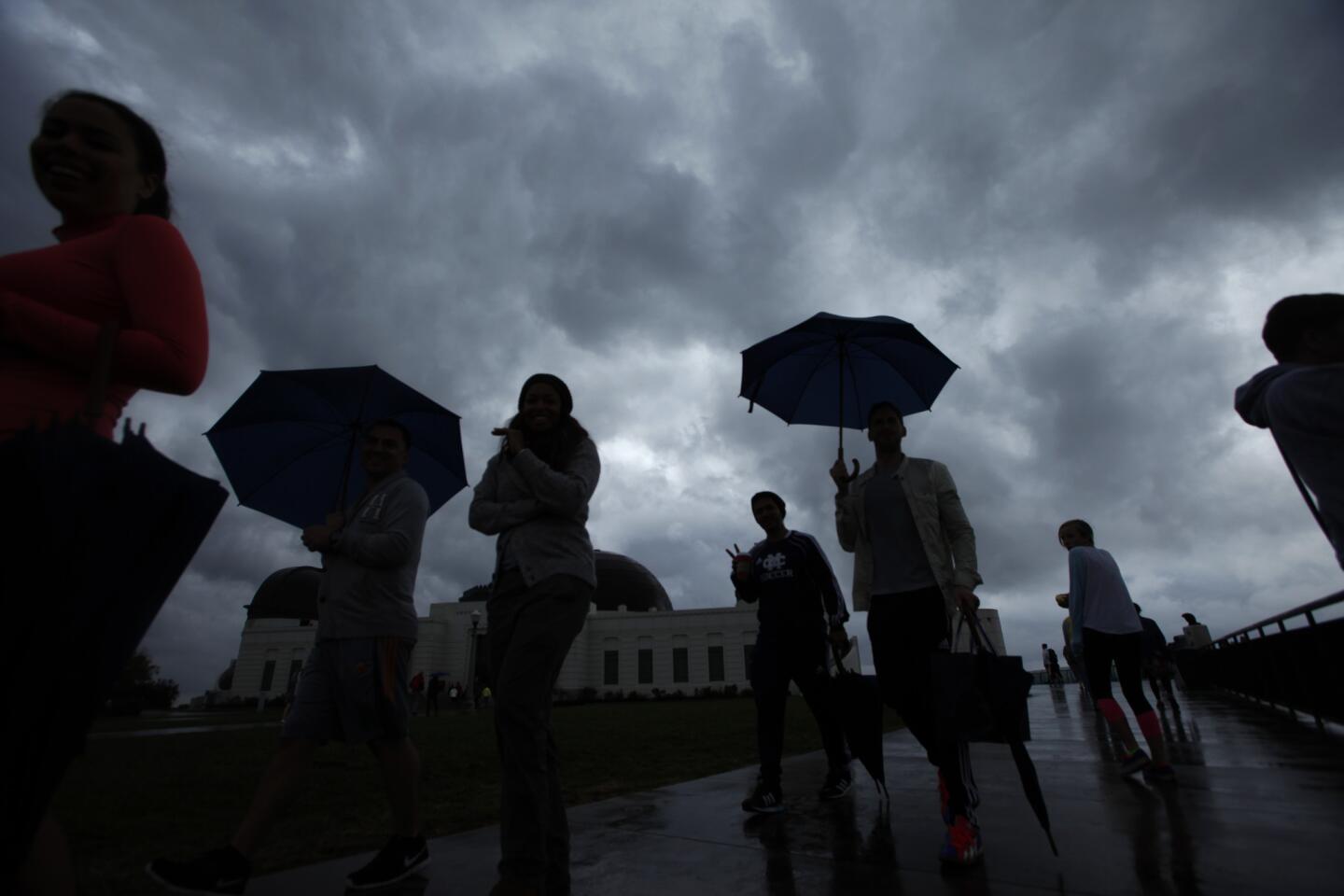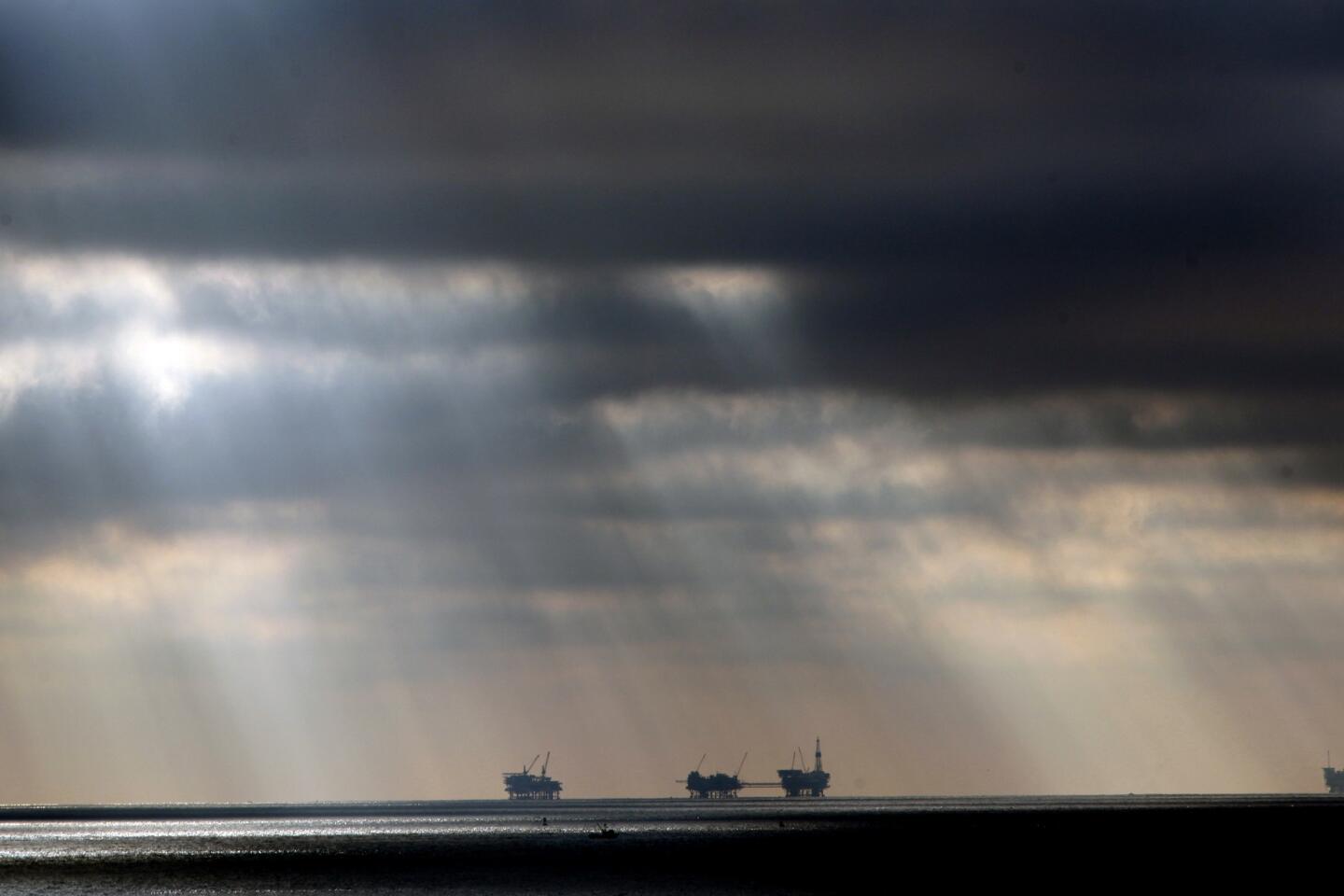Editorial: A drop in L.A.’s water-needs bucket
- Share via
At long last, and thank goodness — the rain. Good for the gardens and good for tamping down wildfire danger (although exacerbating the hazards in areas already burned). A drop in the bucket, but a very welcome one.
As much as we need the rain, though, what Southern California and the rest of the state really need is to refill our biggest reservoir — the Sierra snowpack — because that’s where most of our water comes from. There is a greater storage capacity in heavy snows than behind concrete dams, and the snowmelt is released at a predictable rate.
Our rain drought is connected with, but different from, the drinking water, agricultural and environmental drought up north. So Southern California residents can be at least as glad for this week’s dusting hundreds of miles to the north and east as for the welcome but less plentiful rainfall here.
But our future could look different. If we plan and invest wisely now, local rains in future years can become a bigger part of our hedge against water shortages. There are 14 dams in the foothills around Los Angeles that collect stormwater and more than two dozen spreading grounds that allow it to percolate into the soil, where it is cleansed and available for pumping and use.
The soft-bottomed San Gabriel River does a good job of getting water into the ground, but the Los Angeles River, with its concrete bottom and the surrounding cemented and asphalted land, sends too much of the runoff rushing into the ocean, taking with it contaminated urban debris that fouls the beaches and the bay. Efforts to restore the river and remove some of its concrete bottom are not focused merely on creating a new waterfront in the midst of the city but are part of a plan to capture and make use of local water.
Proposition 1, the water bond that was approved in November, can help with those efforts, as well as with plans to clean contaminated aquifers in the San Fernando Valley. Such projects can help Los Angeles and neighboring cities rely more on local precipitation and import less from the Sacramento-San Joaquin River Delta, the Eastern Sierra and the Colorado. That will leave more water for others — the environment, other cities, agriculture.
Every option for Southern California’s water future comes with a steep price tag, and capturing more local stormwater is no exception. But so is the status quo. Whether the coming year turns out to be a normal one, a wet one or year four of a sustained drought, the region’s leaders and its citizens must engage in a more serious discussion about our collective water future.
In the meantime, though, enjoy the rain.
Follow the Opinion section on Twitter @latimesopinion
More to Read
A cure for the common opinion
Get thought-provoking perspectives with our weekly newsletter.
You may occasionally receive promotional content from the Los Angeles Times.
